|
Heal Your Home Center: Healthy Home Glossary |
Heal Your Home Center: Healthy Home Glossary
Ever wonder exactly what Volatile Organic Compounds (VOC's) and endocrine disrupters are? Green America's Healthy Home Glossary comes in handy for those who want to learn more about the pollutants so often mentioned on our website, especially within the Healthy Home Tool Kit. Getting familiar with these common culprits can help ensure your bedroom, bathroom, kitchen, and overall home is healthy and free of toxins.
1,4-Dioxane: (a.k.a. iethylene dioxide, diethylene ether, dioxan, p-dioxane, or just “dioxane”) Used as a coolant in cars and as a foaming agent in some body care products, including baby shampoo. A recognized carcinogen and a suspected blood, gastrointestinal, immune, kidney, nerve, respiratory, and skin toxicant.
Aluminum: A lightweight metal used in cooking utensils and beverage containers. A suspected blood, nerve, reproductive, and respiratory toxicant. Suggestions that ingested aluminum may have some link to Alzheimer’s disease are inconclusive.
Arsenic: A recognized carcinogen and developmental toxicant. Suspected of being toxic to the human blood, endocrine, gastrointestinal, immune, nerve, reproductive, respiratory, and skin systems.
Arsenic disulfide: Used as a pesticide on produce. A recognized carcinogen and developmental toxicant.
Benzyl benzoate: A common insecticide for lice and mites, as well as a food additive, a fragrance fixative, and plasticizer. A suspected neurotoxin.
Bisphenol-A: Used to make transparent, hard plastic known as polycarbonate (#7), such as baby bottles and the lining of infant formula cans. Exposure may cause prostate cancer, breast cancer, female infertility, endocrine disruption, and obesity.
Chromium copper arsenate (CCA): A compound that was once used on pressure-treated wood. Leaches arsenic.
Crystalline silica: (a.k.a. “silica gel”) Usually found in a small packet serving as a desiccant. Packaged with items that might mold or spoil when wet, and a component in play sand. A known carcinogen and a suspected toxin to the gastrointestinal, kidney, and respiratory systems. Fine silica can hurt the respiratory tract if inhaled, but presents a low threat in skin care products and in food.
DEHP: (aka Bis(2-ethylhexyl)phthalate, BEHP, di-2-ethyl hexyl phthalate, dioctyl phthalate, or DOP) A liquid plasticizer used in hydraulic fluids and PVC (#3) plastic. While DEHP cannot cause harm through skin contact, when ingested it can damage reproductive organs, the lungs, kidneys, and liver, and fetuses.
Dichlorobenzene: Used in mothballs, urinal “cakes,” and other disinfectants designed to control moss and mildew. A suspected carcinogen.
Diethanolamine (DEA): (a.k.a. bis(hydroxyethyl)amine, diethylolamine, hydroxydiethylamine, diolamine, and 2,2’-iminodiethanol) Colorless crystals used in cosmetics, where it is suspected of combining with another common chemical to produce highly carcinogenic nitrosamines. Alone, it’s a suspected carcinogen and a suspected toxicant to the blood, gastrointestinal, kidney, nerve, respiratory, and skin systems. Damages fetal development in mice.
Dioxin: (a.k.a. Dioxine, TCDBD, TCDD, 2,3,7, 8-TCDD) A byproduct of chlorine manufacture and PVC incineration. A recognized carcinogen and developmental toxicant, and suspected of being toxic to blood, endocrine, gastrointestinal, immune, kidney, nerve, reproductive, respiratory, and skin systems.
Endocrine disrupters: The endocrine system regulates hormones and the glands that secrete those hormones in the body. Endocrine disrupters (a.k.a. endocrine disrupting compounds, endocrine modifiers, or hormone disrupters) are chemicals that interfere with the endocrine system by mimicking or inhibiting natural hormones. They can cause reproductive damage and have been implicated in cancers of the reproductive system.
Formaldehyde: (a.k.a. methanal, methyl aldehyde, or methylene oxide) A smelly colorless gas found in pesticides as well as in consumer products and building materials. A recognized carcinogen and suspected gastrointestinal, immune, nerve, reproductive, respiratory, and skin toxicant.
Hormone Disrupters: See endocrine disrupters.
Lead: A heavy, soft grey metal once used widely in paints. It is now illegal as a paint ingredient over 660 ppm, though it may legally be mixed into other products, like jewelry. Some imported toys containing lead have recently raised alarms about children’s exposure. A recognized carcinogen and neurological, developmental, and reproductive toxicant. Also suspected of being toxic to people’s blood, endocrine, gastrointestinal, immune, kidney, respiratory, and skin systems.
Mercury: A heavy metal recognized as a developmental toxicant and suspected of being toxic to humans’ blood, endocrine, gastrointestinal, immune, kidney, nerve, reproductive, respiratory, and skin systems. People are most likely to be exposed to mercury by eating contaminated fish and by drinking contaminated water.
Naphthalene: (a.k.a. naphthalin, tar camphor, or white tar) Used in many dyes and as a fumigant in household products such as mothballs, where it gives them their signature smell. A recognized carcinogen and a suspected toxicant to the blood, developmental, gastrointestinal, nerve, respiratory, and skin systems.
Parabens: Parabens are widely used as preservatives in pharmaceuticals and cosmetics, and are found in toothpaste, shampoo, moisturizers, and shaving gels. Suspected of toxicity to skin. Some studies have linked parabens to cancer and to endocrine disruption.
Perfluorochemicals (PFCs): PFCs are widely used in well-known consumer brands including Teflon, Stainmaster, Scotchgard, and Gore-Tex (they have subsequently been phased out of Scotchgard). Laboratory studies on animals have linked them to several cancers, thyroid problems, damage to the immune system, reproductive problems, and birth defects.
Perfluorooctanoic Acid (PFOA): (a.k.a. C8) Used in the manufacture of nonstick cookware such as Teflon, Gore-Tex fabric, and StainMaster carpet. PFCs in microwave popcorn bags may form PFOA when ingested. A persistent, bioaccumulative chemical that may be linked to cancer, heart disease, and immune system damage.
Phenol: (a.k.a. carbolic acid, hydroxybenzene, monohydroxybenzene, phenyl alcohol, or phenyl hydroxide) A crystalline solid widely used in antiseptic sprays and cleaners, paint removers, and disinfectants. Suspected of being toxic to people’s blood, developmental, gastrointestinal, kidney, nerve, reproductive, skin, and respiratory systems.
Phthalates: Commonly used as softeners in polyvinyl chloride (PVC), other soft plastics, and in a variety of beauty and skin care products. Studies have identified phthalates as endocrine disrupters. Phthalates may also cause liver and kidney lesions, lead to a higher risk of certain cancers, and may exacerbate asthma and allergies in children.
Polybrominated diphenyl ethers (PBDEs): PBDEs were commonly used as fire retardants in foam furniture until 2005, when the most commonly used form was banned. PBDEs are neurotoxins that bioaccumulate, building up in people’s bodies over time. New carpet padding may likely still contain PBDEs, and PBDEs have been found in many fish.
Polycarbonate (#7) plastic: A transparent, hard, unbreakable plastic that offgasses bisphenol-A, a suspected endocrine disrupter.
Polychlorinated biphenyls (PCBs): Cancer-causing, persistent chemicals that were once used widely as coolants, fire retardants, and additives in paints and pesticides. PCBs were banned in the United States in 1976, but they persist in the environment, contaminating a number of animals, particularly farmed salmon. Salmon with PCBs can be a carcinogen to those who eat them, and a neurotoxin to fetuses when pregnant women eat salmon.
Polystyrene (#6) plastic: The white “foam” commonly used for packing peanuts, protective packaging, and “clamshell” take-out containers. May leach some benzene, a known carcinogen, into the food when heated. Difficult to recycle and very slow to biodegrade.
Polytetrafluoroethylene (PTFE): This is the resin coating associated with Teflon brand and other non-stick cookware. It breaks down at high temperatures into chemicals linked to neurotoxicity, respiratory damage, and human polymer fume fever. May be harmful to pets.
Polyvinyl chloride (PVC): (a.k.a. vinyl or #3 plastic) Generates carcinogenic dioxin when manufactured and incinerated. In its pliable plastic form, it can leach phthalates, which are endocrine disrupters.
Quaternary ammonium compounds: (a.k.a. quaternary ammonium cations or quats) are used widely in disinfectants, fabric softeners, and pesticides. A respiratory irritant.
Sodium Lauryl Sulfate (SLS): (a.k.a. sodium dodecyl sulfate, sulphate, SDS, or NaDS) Used as a foaming agent in toothpaste, shampoo, shaving creams, and bubble baths, and as a tick repellant in pet products. A suspected gastrointestinal and liver toxicant.
Volatile Organic Compounds (VOCs): Any one of a category of chemicals that are chemically volatile—that is, they evaporate into the air and react to sunlight, forming ground-level ozone and damaging indoor air quality. (“Organic” here is a scientific term indicating that the chemical contains carbon.) VOCs pose a particular risk of developmental damage to infants and fetuses. Some commonly used VOCs include formaldehyde and other endocrine disrupters.
—Sources for this glossary include Environmental Defense’s Scorecard.org database and the Environmental Working Group’s scientific research.
|
|
Going Green: Eco-Friendly Laundry Products |
Dear Green America,
I’d like to use more eco-friendly laundry products to wash my clothes. Any recommendations?
— Marty M., Denver, CO
An excellent decision, Marty. Conventional detergents are made from synthetic petrochemicals that are hard on the environment. They also can leave residue on clothing, so their toxic ingredients constantly brush against our skin, potentially causing rashes. You can safely keep your clothes looking smart by washing them with eco-friendly soaps and detergents.
If you choose soaps, look for an all-natural liquid soap made without artificial dyes or fragrances, such as Dr. Bronner’s Magic Soaps (760/743-2211, www.drbronner.com). Use the same amount of soap as you would detergent.
Soaps can react with chemicals in hard water, leaving a dulling film on clothes. To combat this, Annie Berthold-Bond, author of Better Basics for the Home (Three Rivers Press, 1999), recommends adding baking soda. “Start out with ¼ cup of baking soda, and increase to ½ cup if you have very hard water,” she advises. Leave the soda in the water for ten minutes, then add the soap and clothes.
To prepare clothes for the switch from detergent to soap, wash them initially with ½ cup of white distilled vinegar for a full load to prevent yellowing (a result of detergent residues reacting with soap), says Berthold-Bond.
The best eco-friendly detergents are made without nonrenewable, petroleum-based chemicals. They are biodegradable and contain no optical brighteners, dyes, or artificial fragrances.
Some excellent green laundry detergents to try include:
- Ecover (www.ecover.com)—Offers nontoxic powder and liquid detergents, as well as a detergent for delicates.
- Natural Choices Home Safe Products (www.oxyboost.com)—Sells Oxyprime, a nontoxic laundry detergent, and Allergy Free, a detergent for people with chemical sensitivities.
- Sun & Earth ( www.sunandearth.com)—Offers a “Deep Cleaning Formula” laundry detergent.
- Seventh Generation ( www.seventhgeneration.com)—Sells nontoxic liquid and powder laundry detergent, as well as Free and Clear fragrance-free laundry detergent and a detergent for baby clothes.
Conventional bleaches and fabric softeners have their problems, too. Conventional bleaches are made from chlorine, a known carcinogen according to the US Environmental Protection Agency. Fabric softeners contain chemicals that can cause allergic reactions. What’s a concerned consumer to do? Try these nontoxic alternatives:
For whitening:
- Use a non-chlorine bleach, such as oxygen bleaches like Oxyboost, available from Natural Choices Home Safe Products. Also, Ecover offers two natural, chlorine-free bleaches, one made with hydrogen peroxide, and one with percarbonate.
- Soak clothes overnight in a solution of one part hydrogen peroxide to eight parts cold water. Wash as normal.
For softening fabric:
Add ½ cup baking soda to the rinse cycle of your wash. You can also try a commercial green fabric softener like Natural Choices Home Safe Products’s Safe ‘N Soft, Ecover’s Natural Fabric Softener, or Sun & Earth’s Ultra Fabric Softener.
Dear Green America,
I’ve read a lot about toxins in cosmetics. Is there a way to compare my favorite brands?
— Julie G., Chicago, IL
Check out Skin Deep, a database compiled by the Environmental Working Group (EWG) that provides safety analyses of the ingredients in over 7,500 personal care products, from cosmetics to shampoo to soap. You can search by product category or brand name.
You can find all-natural, organic cosmetics in Green America’s National Green Pages™
|
|
The Challenge: Nifty But Thrifty |
We asked our summer editorial fellows, Krisna Bharvani and Sierra Schellenberg, to find an office casual outfit that they would wear, as cheaply as possible. The rules were that they could spend no more than $50; they had to assemble a complete outfit, including shoes and one accessory; and they needed to get their items from a combination of online and local resources. Here's how they did:
Left: Total Krisna paid: $49
Estimated retail value: $162
Savings: $113Total Sierra paid: $18.95
Estimated retail value: $158
Savings: $139

Krisna (left) bought her cotton print dress from Beacon’s Closet, a New York City vintage clothing store that has an online and brick-and-mortar shop.
Cost: $9.47 + $5 shipping. “It was 50% off.”
Retail: $39.99 for a similar dress at Urban Outfitters
The intertwined circle pendant comes from No Relation Vintage, a “salvaged goods” shop in NYC.
Cost: $5
Retail: $34 at Nordstrom
Her “fun-sized” leather cross-body bag came from the Beacon’s Closet brick-and- mortar store.
Cost: $7.97.
Retail: $18 for its doppelganger at Target.
Krisna “instantly spotted” these patent leather Tahari flats at an outdoor flea market.
Cost: $22
Retail: $69.95 at DSW
Sierra (right) got her beaded necklace at a clothing swap with friends. “I also walked away with a really nice vase, and my friend walked away with my old sweater and one of my bracelets,” she says.
Cost: $0.
Retail: $8 from Forever 21
Her wool/acrylic dress is from LikeTwice.com, an online used clothing store (now closed).
Cost: $13.95 + $5 shipping.
Retail: $84.95 at Ann Taylor
Her leather shoes are a hand-me-down from a family member.
Cost: $0.
Retail: $65 from Clarks
|
|
Tips: A Healthy Lifestyle Starts with a Healthy Kitchen |
Whether you're on a health kick or just looking for a new home project, Green America is here with tips for a healthy lifestyle that start in the most important room in the house: the kitchen.
1. Avoid Pesticides; Go Organic
The problem: Many conventional fruits and vegetables carry pesticide residues. 23 of the world's 28 most commonly used pesticides are suspected carcinogens, and several are possible neurotoxins and endocrine disruptors. Consuming conventional dairy products and meat can expose you to the hormones used on food animals, which may be linked to endocrine disruption.
The solution: Buy organic foods, grown without toxic pesticides, when you can. If you're on a tight budget, avoid conventional fruits and vegetables that carry the highest amounts of pesticide residue: apples, bell peppers, celery, cherries, imported grapes, nectarines, peaches, pears, potatoes, raspberries, spinach, and strawberries. Eating organic also gives your immune system a boost. A study at the University of California-Davis found that organic produce has 19 - 50 percent more cancer-fighting anti-oxidants than conventional produce.
Visit the National Green Pages™ category: food
Check out our articles:
Eat Less Meat; Cool the Planet
Is Organic or Local Food Better?
9 Ways to Support Sustainable Food
The Skinny on Alternative Sweeteners
2. Genetically Modified/Engineered Foods (GMOs)
The problem: Genetically modified organisms (GMOs) are becoming more and more prevalent in our food supply, but they haven’t been definitively proven safe for human health and the environment. In fact, an increasing number of animal feeding studies have demonstrated possible links between GMOs in our food and kidney and liver damage, as well as an increase in tumors. While more studies are needed to prove that GMOs can harm people, no one has proven that GMOs are safe, either. What we do know is that GMOs are responsible for an increased use of toxic pesticides. Data from 1996-2008 from the USDA, analyzed by the Organic Center, showed that GM crops resulted in a 318.4-million-pound increase in overall US pesticide use.
The solution: Buy organic. USDA-certified organic foods prohibit the use of GMOs, as well as toxic synthetic pesticides and fertilizers. You can also look for foods that are tested verified as non-GMO (containing less than .9 percent GMOs) by the Non-GMO Project. Finally, avoid non-organic processed foods that aren’t verified non-GMO, as they are highly likely to contain genetically modified organisms—particularly corn or soy.
Check out our articles:
GMOs and the Case for Precaution
9 Ingredients to Avoid
GMO Inside Campaign
3. Purge Plastics
The problem: Plastics often contain toxins that can leach into food, especially when heated.
When plastics are created, manufacturers will often include “additives” to enhance their performance, according to a 2009 study by Mike Neal and Dr. Anthony Andrady (published in Philosophical Transitions B). These additives include fillers to make the plastics stronger, thermal stabilizers to allow them to be heated, plasticizers for pliability, UV stabilizers to keep them from degrading in sunlight, fire retardants, colorants, and more.
In short, all plastics are a veritable soup of chemicals, and all are capable of containing toxins, depending on a given manufacturers secret plastic “recipe”. In fact, a July 2011 study published in Environmental Health Perspectives looked at 500 diverse types of commercially available plastics, from baby bottles to food packaging, and found that especially when exposed to heat, they release estrogen-mimicking hormone disruptors, regardless of their recycling code numbers. The study authors also note that a single plastic part may contain five to 30 chemicals, and a plastic item made up of many parts may contain up to 100 chemicals.
The solution: Purge plastic from your life in favor of reusable glass and stainless steel alternatives. While it’s likely difficult to get rid of all plastic, there are plenty of options to help you get rid of wasteful, single-use plastic—especially for food and beverage items.
Learn more:
Could You Go Plastic-Free?
11 Easy Ways to Kick the Plastic Habit
4. Be Cautious with Your Cookware
The problem: Non-stick pans with Teflon or Teflon-like coatings contain polytetrafluoroethylene (PTFE) and perfluorooctanoic acid (PFOA), which break down into the air at high temperatures. Aluminum can also find its way into your food through cookware. Though exposure to aluminum has not been linked definitively to any adverse effects like Alzheimer's disease, it is thought wise to avoid extra exposure. Linked to: cancer.
The solution: Stainless steel and cast iron are both safe alternatives to non-stick and aluminum pans. Non-stick anodized aluminum pans have a layer of aluminum oxide to prevent aluminum leaching.
Read more ideas to make your lifestyle green and healthy on our Green Living page.
|
|
Simple Steps to a Healthy Bedroom |
1. Choose Better Bedclothes —
The problem: Toxic chemicals that resist flames, water, moths, stains, soil, and wrinkles are sometimes added to textiles like bedclothes. Labels such as "permanent-press," "no-iron," "water repellent," and "flame retardant" may indicate fabric treatments that off-gas chemicals like formaldehyde and perfluorochemicals (PFCs). These toxins may be linked to: respiratory and skin irritation, cancer, and developmental damage.
The solution: Choose organic fabric sheets and covers without any chemical finishers. Most bedclothes will not be labeled with information about finishers, so call the manufacturer and ask, or choose bedclothes that advertise as "chemical-free." Also, avoid fabrics with a "new" smell that may indicate chemical treatments.
Eco-bonus: Organically grown cotton is grown without pesticides that can harm workers and the environment (though those particular chemicals won't reach you in conventional cotton products).
Visit our National Green Pages™ category: bedding/futons/mattresses
Check out our article: The Allergen-Free Bedroom
2. Mind Your Mattress—
The problem: Federal laws require mattresses to be fire resistant, so many manufacturers treat the mattress foam with flame-retardant chemicals. The most dangerous are polybrominated diphenyl ethers (PBDEs), which some manufacturers are phasing out voluntarily. Mattresses and pads made of petroleum-based polyester, nylon, and polyurethane foam (including "memory" foam) can off-gas VOCs. The water-repellants and stain-resistant finishes used on many mattresses, and on some plywood or particleboard box springs, may off-gas formaldehyde. These toxins may be linked to: endocrine disruption, cancer, neurotoxicity.
The solution: Choose mattresses stuffed with natural, nontoxic, and organic materials, and untreated with flame-retardant PDBEs or other chemical finishes. (If this information is not on the tag, call the manufacturer.) Mattresses with a layer of flame-retardant wool may be more affordable than all-organic mattresses. If you can't replace your mattress, minimize off-gassing fumes by covering it with an impermeable encasement intended for allergy sufferers, by vacuuming frequently, by ventilating the room, and by using a HEPA air filter.
|
|
Common Good City Farm Slideshow |

The farm only has two full-time paid staff, and the rest are volunteers. Some volunteers help grow food and tend to the plants, and others help with promotion, communications, volunteer coordination, events, and workshop coordination. Pictured: Common Good City Farm youth education coordinator (volunteer) Chris Soriano and executive director Pertula George creating a trellis for pole beans. [Photo by Dena Blickstein]

I started volunteering with the garden/farm when it first opened in 2007. I came weekly to help tend to the plants because I wanted to further urban agriculture. I wanted to turn our cement and asphalt cities into green spaces filled with oxygen-producing, carbon-sequestering life. And, I figured, if I’m going to grow plants, I might as well grow something we can eat. After a few years of volunteering in the dirt, I started coordinating the workshop program as well.
Pictured: Shireen Karimi with Waynika Cain at one of the farm’s community events.
[Photo by Dena Blickstein]

When I tell people about our workshops, they are interested and intrigued. Once they attend one, they are eager to apply what they’ve learned. Pictured: Prince Charles and Shireen (shaking his hand) talk about eating the food grown on the farm along with the farm’s cooking and nutrition workshops on His Royal Highness’s spring 2011 visit to Common Good City Farm. [Photo by Deedy Ogden]

The children who come to visit the farm are particularly excited to try purple-colored beans, pull up carrots out of the ground, and eat cherry tomatoes plucked off the vine. They can be interested in good food if they are given the chance.

Throughout my years of volunteering at Common Good City Farm, I’ve learned that the simple act of maintaining a garden, whether with edibles or not, helps combat erosion, toxic run-off, pavement heat, and climate change, as well as provide some natural serenity in the midst of hectic urban lives.
I’ve also learned that anyone can plant a few things and get a bit of high-quality, healthy, fresh food, even with just a few pots on a patio. Gardening is accessible to anyone, even if you’re in a city apartment.

I started “gardening” years ago in a second-story apartment with no yard but a balcony. All it took was pots, soil, seeds, and the faith and desire to create life. It is so amazing and inspiring after days of watering boring brown soil to watch the first tiniest bits of green pop out, and then see them uncurl and grow a bit more each day. Going outside and just picking lettuce or tomato or parsley directly from the plant and making your dinner, from a plant that you yourself started from seed and nurtured and cared for, is a wonderful experience. It truly is the magic of Mother Nature before your eyes. [Photo by Dena Blickstein]
Contact: CommonGoodCityFarm.org
SaveSave
|
|
Interview with Father of Environmental Justice Robert Bullard |
Note: This interview is from an article in published in the Fall 2007 issue of Co-op America Quarterly, now called Green American.
Dr. Robert Bullard is Ware professor of sociology and director of the Environmental Justice Resource Center at Clark Atlanta University. He is also widely known as the “father of environmental justice” for more than 25 years of tireless work on behalf of communities of color who have been victims of environmental racism. His work gained a national spotlight in 1987, when two landmark studies—one by Dr. Bullard that focused on Houston and the Toxic Wastes and Racenational study commissioned by the United Church of Christ (UCC)—found that toxic facilities like landfills, chemical plants, and incinerators are much more likely to be located in areas based on race and class.
This year, Dr. Bullard and three of his colleagues published a follow-up to the first UCC study, called Toxic Wastes and Race at Twenty: 1987-2007. In it, they showed that things haven’t changed much—communities of color are still bearing the poisonous burden of America’s industrial way of life.
Co-op America editor Tracy Fernandez Rysavy talked to Dr. Bullard about this latest study; about how environmental justice issues affect everyone, not just those who live near toxic facilities; and about what gives him hope as he gets ready to begin the next 25 years of his important work.
CO-OP AMERICA/TRACY FERNANDEZ RYSAVY: What kind of role has race played in siting toxic facilities in the US?
DR. ROBERT D. BULLARD: When you look at all of the variables, race is still the most potent factor to predict where these facilities are located, more important than income or other socio-economic factors. Even when you control for how much money people make and the price of housing, race still comes out as the number one factor in determining where toxic facilities are located.
Race permeates everything, in terms of housing, education, where people can live, land- use decisions, transportation and mobility. And often, the fact that so many people of color live near facilities that other people don’t want is based on historical factors that resulted in residential segregation and affected the decisions of housing commissions.
TRACY: So you’re saying that it’s not being poor that makes a community end up with toxic facilities—it’s more the fact that brown people or black people live there?
DR. BULLARD: That’s right. And it’s not just toxic waste facilities. Communities of color have more of the negatives and also fewer of the positives—for example, they often lack something as basic as a grocery store or a park or a library, or ease of access to hospitals and other amenities.
Land use oftentimes is not based on any objective, rational criteria. The negatives follow the path of least resistance in terms of how they get sited and the extent to which groups can organize and fend off unwanted land use. A lot is due to legacy issues, or things left over from the past, when city councils and boards of supervisors were made up of all white people.
And newer occurrences are based on patterns that have not yet changed. Even when we get people of color elected to city councils and boards of supervisors and task forces, these things generally still follow these patterns. That’s what we’ve shown in our report, Toxic Waste and Race at Twenty (TWART).
What that means is that the current land use and environmental protection apparatus is broken and needs to be fixed. It does not protect all communities equally. And that’s why many of the policy recommendations we put forward in the TWART report are crucial—because the existing laws and regulations and industrial siting policies do not protect and do not address these wide disparities.
TRACY: Can you give me an example of one of the policy recommendation in the TWART study that would be very powerful in repairing these disparities?
DR. BULLARD: Before toxic facilities can be located, we need to take into account the extent to which a community or neighborhood already is saturated. Right now, there’s nothing in the laws or regulations that would prohibit a neighborhood from being overly saturated with locally unwanted land uses or industrial facilities.
There’s nothing in our current laws that would take into account the cumulative effect of having a number of facilities within one area—we’re talking about a two-mile radius, which is a very small area. There’s no threshold where we could say, “This community has had enough and there should be no more toxic loading.” When a permit is granted, only that permit is taken into account, not what’s already there.
The way it works in our society is that when one community gets one facility, it’s easier to get two. When it has three, it’s easier to get four. The idea is that since you have five facilities, one more won’t make a difference. And we say that kind of concentration really disadvantages the communities that are hosting these facilities and oftentimes did not ask to get them.
There’s another recommendation where we talk about the question of examining health effects and looking at comparative health disparities within a specific community or neighborhood when a facility is being proposed. The idea is that if a community is already sick and overburdened with toxic facilities, it does not make a whole lot of common sense to add an additional facility.
One example is in Port Arthur, Texas. There’s a neighborhood there, a predominantly black neighborhood, that has all kinds of facilities—we’re talking incinerators, petrochemical plants, all kinds of refineries, you name it. And recently, there was an incinerator that was put there to burn VX nerve gas wastewater. It’s like giving a permit to blow smoke in a roomful of asthmatics!
There should be a trigger that would say, “This community has had enough, and it’s already sick, and it does not need any more environmental stressors and polluting facilities placed in this area.”
Now that’s not rocket science.
TRACY: You’ve said that this type of environmental racism even affects schools.
DR. BULLARD: Schools are not exempt from what we’re talking about. If a neighborhood is saturated with landfills, incinerators, toxic waste sites, and many of our schools are in those neighborhoods, they’re affected, too. If you look at schools across the US located within a one-mile radius of these facilities, you’re talking about a lot of school children that are located in areas with heavy industrial pollutions.
It’s important that we not think of children as little adults. We have to think of them as very sensitive populations that need special protection. We want our children to play outside and get physical activity and not be obese, but we don’t want our children to be outside on dirty air days or in parks built on dump sites. It’s not safe.
TRACY: I remember reading that the people who lived in the Love Canal neighborhood in the 1970s—which was built on top of a toxic waste site—had toxic waste barrels erupting in their local schoolyard. Does that kind of thing still happen?
DR. BULLARD: It still happens. As a matter of fact, there are a number of similar cases that we’ve worked with. There was a school in Los Angeles that was built on top of an old toxic waste site. The Agriculture Street Landfill community in New Orleans, for example, had an $8 million elementary school built on top of an old garbage dump. The school had to be closed, and people who lived nearby were fighting for relocation. They finally won in January 2006, but they were relocated in August of 2005 by Hurricane Katrina, unfortunately.
Almost every school district in the country will be looking for land on which to site new schools, and it’s important that we not make the mistakes of the past.
TRACY: We’ve talked about asthma rates a bit. What else happens to communities when they have clusters of toxic facilities around them?
DR. BULLARD: What also happens is that the only industries that these communities can often attract are other dirty industries. The clustering effect, the piling on effect, the saturation effect, leads to the fact that these are not areas where you will get a lot of clean industry and clean jobs coming in. What you get are basically more and more dirty industries—and they often are not even employing the local residents living nearby.
Residents are always given this promise of jobs: “Well, if we locate this factory here, you’ll get jobs.” The promise of a job is very different from a job. And too often, many of the fence line residents get promises and not jobs.
Some people say that the least that these companies can do is hire local residents when they put a toxic facility in their neighborhood. If you’re living on the fence line, you could walk to work. But in many cases, these jobs are not for the residents at the fence line or nearby; they are for people who commute in with their cars, and they drive in and out, causing more pollution.
So the people who are at the fence line are left with poverty, pollution, and too often, illnesses. That’s a triple whammy that needs to be reversed.
TRACY: Toxic Waste and Race at Twenty said things really haven’t changed in the last two decades when it comes to putting toxic facilities in communities of color. What gives you hope in the face of these findings?
DR. BULLARD: It’s an uphill struggle, but I’m optimistic that we will be able to continue to expand the issues. A lot of these things just didn’t happen until the last 20 or 30 years. A lot of this has been building for centuries.
First, what gives me hope is the fact that we have more people working on these issues—we have young students, and we have universities that have environmental justice courses in law school and medical school and planning school.
There are other areas where we’ve made improvements in terms of getting more grassroots people on board commissions to identify other problems that may not necessarily be related to a landfill or hazardous waste site. They’ve expanded the whole idea of environmental justice to include access to transportation, access to full-service grocery stores, equity in how we plan our cities and our metropolitan regions. We have broadened the definition of what environmental justice means for policy makers.
And there’s the fact that we’ve gotten all kinds of organizations—faith-based, environmental groups, mainstream as well as health groups—to say with us that the environment should be nurturing, and we should be able to get sustenance from the environment; it should not be something that’s harmful.
So we’ve changed the definition, and we’ve gotten more and more people involved.
The other thing is that we’ve been able to get environmental justice on the international radar. These issues are global and they’re international, such as when we’re talking about the issue of climate and climate justice. The same people who are disproportionately and adversely impacted in terms of environmental problems—generally people of color—are impacted negatively and disproportionately when we talk about climate issues.
Environmental justice is now a concept and paradigm that is not just confined to rural places in southern US; it’s international.
TRACY: You recently testified before Congress on environmental justice issues. How did that come about?
DR. BULLARD: The four principal authors of the TWART report, myself and Drs. Paul Mohai (University of Michigan), Robin Saha (University of Montana), and Beverly Wright (Dillard University of Louisiana), circulated a letter with the ten policy recommendations that were pulled out of the report. We sent it out to civil rights groups, environmental groups, health groups, and others, and we received the support of over 100 organizations representing millions of people around the country. We took that letter to the Senate, and as a result, Senator Hillary Clinton (D-NY), the chair of the Senate Subcommittee on Superfund and Environmental Health, held the first-ever Senate hearing on environmental justice on July 25 of this year.
Tracy: You’ve been working on these issues for more than a quarter of a century, and this is your first hearing?
DR. BULLARD: (laughs) This is the first Senate hearing.
I think what that says is that we have to do a better job in getting the information out, in informing our elected officials about what’s going on. In my testimony, I presented a lot of the materials and findings and recommendations from the report, and really tried to challenge the Senate Subcommittee and the Congress to strengthen and to put back in place many of the environmental justice regulations and initiatives that are being stripped and rolled back.
Like the enforcement and implementation of the Executive Order 12898 on Environmental Justice, which required the EPA to take the lead in addressing environmental justice issues. There have been recent attempts to redefine environmental justice and not deal with racial disparities and income—or to basically strip race and income out of the Executive Order. That was not the intent of the order when President Clinton signed it in 1994.
There have been reports from the General Accounting Office and two reports from the EPA’s Inspector General (one in 2004 and one in 2006) that basically say EPA has done a lousy job of implementing the Executive Order since it was signed 13 years ago. We’re asking Congress to put the rules back in place and to strengthen what we have, and also move to the next level.
TRACY: What kind of reactions did you get after your testimony?
DR. BULLARD: After a number of us testified, we did get some commitments from the Subcommittee to move forward and get the EPA to implement the recommendations the Inspector General made in those two reports, regarding strengthening the Executive Order. If those recommendations were carried out, we would be well on our way to addressing a lot of the environmental injustice problems in communities of color and low-income communities around the country.
The Subcommittee did press the EPA on why it has taken so long to get things moving and why they’ve really dragged their feet. I think they really scolded the agency for not doing what it needs to do. And we want the EPA and the Departments of Transportation, Energy, and the Interior—all those 12 or 13 agencies that come under the Executive Order—to really get back on track. The problem is that when EPA backed off, especially in the last six years, that’s given the wrong signal to a lot of these other federal agencies because they take their cues from EPA.
TRACY: Do you think they’ll start acting, or do you think it’ll take until after the next election?
DR. BULLARD: I would hope that the Congress would begin to move on some of these environmental justice initiatives—there are a number of bills currently moving through Congress. I’m hopeful.
But it’s all about getting communities around the country energized and mobilized to say we can’t wait another 12 years. We’re talking about communities that are really hurting, especially the most vulnerable parts of our communities, low-income children and elderly people.
It should not be a Democratic or Republican issue. This is an issue of health and equal protection of our environment and our communities.
TRACY: What do you recommend people do if they live in a community that’s targeted?
DR. BULLARD: It’s important that people identify the strengths in their community, especially the organizations. Many times, low-income communities and communities of color do not have environmental organizations operating within, but they do have church-based groups, neighborhood groups, civic groups, and homeowners associations that can do this work.
They need to organize and mobilize and get themselves educated on what the impacts of these toxic facilities are. Get the permit applications and read them and see exactly what kind of thing is being proposed. Then, access databases like the toxic release inventory database and see what the effects of that facility could be, so they can tell people about them.
We have more resources available to these communities today than we did 20-30 years ago—there are all kinds of environmental justice organizations around the country and environmental centers based at local universities that can assist.
There’s no substitute for organization and education. No substitute at all.
Also, it’s important for everyone to understand that we are all in this together, even though most Americans don’t live next to a toxic waste site or next to a freeway or polluting facility. It affects everybody, because when illnesses rise and health care goes up, everybody will have to pay.
If we are to be a just society, that means we all should share in trying to address these problems that may somehow hit some populations harder. In the end, we all will pay. There are some people saying, “Well, I don’t drive, I don’t pollute.” But if you breathe the air, you are impacted.
So it becomes our civic duty to say, “If we really are to become a safer, more secure, and healthier society, we all have to contribute to solutions, not just talk about the problems.”
|
|
SlipSLipSlip |
|
|
wcpslop3 |
|
|
WCP Slip 2 |
|
|
WCP SLip |
|
|
How To Eat Organic Food on a Budget |
It can be hard to eat organic food on a budget. But we have some tips on how to prioritize the foods least contaminated by pesticides, increase your access to healthy, organic foods, and even build community along the way.
Organic or Conventional?
If you’re on a tight budget, prioritize buying organic versions of produce that’s normally the most contaminated or genetically engineered.
Safe to Buy Non-Organic (least contaminated by pesticides after washing)
- Avocados
- Pineapples
- Cabbage
- Sweet Peas (frozen)
- Onions
- Asparagus
- Kiwi
- Eggplant
- Grapefruit
- Cantaloupe
- Cauliflower
- Sweet Potatoes
Always buy organic (most contaminated and/or genetically modified)
- Apples
- Peaches
- Nectarines
- Strawberries
- Grapes
- Celery
- Spinach
- Sweet Bell Peppers
- Cucumbers
- Cherry Tomatoes
- Snap Peas (imported)
- Potatoes
- Hot Peppers
- Kale/Collard Greens
- Papaya*
- Sweet Corn*
* A small amount of sweet corn, papaya and summer squash sold in the United States is produced from GE seedstock. Buy organic varieties of these crops if you want to avoid GE produce.
Sources: GMOInside.org and Environmental Working Group’s ‘Dirty Dozen Plus’ and ‘Clean Fifteen’
If You Have More Time Than Money…
Reduce Your Processed Food And Restaurant Purchases
Processed food is often more expensive and less healthy than whole foods. Use the money you save by avoiding processed food and expensive restaurant food to buy more organic items.
Grow Your Own Food
It’s not only fun, but it can save money, cut pesticides, and reduce carbon emissions compared to store-bought vegetables. Can some of your produce for the winter months; our article, “Think Globally, Can Locally” can help.
Volunteer At A Local Food Co-op
Many allow members to volunteer a few times a month in exchange for a discount.
Arrange a CSA Workshare
If you belong to a Community Supported Agriculture (CSA) arrangement with a local farmer, ask the farmer if you can exchange some work hours for a discount on your weekly share of produce.
If You Have More Money Than Time…
Join A CSA
You can save up to 40 percent on in-season and organic (or close-to-it) produce over buying it from the grocery store by joining a Community Supported Agriculture (CSA) arrangement, according to DailyFinance.com. (find a sustainable CSA at localharvest.org and eatwellguide.org)
Consider An Organic Delivery Service
You’ll save time and gas money, and since the service delivers groceries to many households in one trip, you’ll save on climate emissions, too.
If You’re Broke And Busy…
Buy Organic Wisely
Use our “Organic or Conventional?” list above to focus your organic grocery purchases on the types of produce most likely to be contaminated by pesticides or genetically modified.
Eat less meat
Better yet, go vegetarian or vegan! Author John Robbins notes that eating a plant-based diet typically costs 25 percent less than a meat-eater’s diet.
Avoid fast food
While it might seem inexpensive, the impact of fast food on your health—and future health-care costs—can be catastrophic due to its high content of salt, sugar, and fat.
Forego bottled water
Say goodbye to wasteful, single-use bottled water and save $1,400 a year.
Buy in bulk and on sale
Green American Mark Landers buys organic food by the case, which gets him a ten percent discount at his local store. And member Victoria A buys organic produce like blueberries whenever it's on sale and freezes it in single-serving portions for quick thawing later. Read our latest article on buying in bulk.
|
|
A Tale of Two Shirts: Green vs. Conventional |
This is a tale of two T-shirts, one from the popular mall store Forever 21, and one from Green America Green Business Network member Blue Canoe. The shirts are both blue and made of 100-percent cotton. They both have cap sleeves, slight tapering at the waist, and come in sizes XS-L. But that's where the similarity ends.
The Forever 21 shirt costs $8.80. The Blue Canoe shirt, $45.95. Which to choose?
"No contest," says just about any budget-conscious shopper in America. "The Forever 21 shirt, hands down."
Even for those who understand that there's more to both shirts than meets the eye, the price difference raises the question that many people have asked us over the years: If there's a premium on green goods, how can one buy green on a budget?
 |
|
The Blue Canoe shirt is made of organic cotton by workers in California.
|
 |
|
The Forever 21 shirt is tied to sweatshop labor and chemical-intensive cotton farming.
|
Taking Responsibility. Or Not
It’s true that people may pay a premium for green goods and services, but it’s not because green companies are trying to earn a larger profit. The fact is, no matter how successful a green business becomes and how much of a cost advantage that company offers due to economies of scale, it’ll never match the low, low prices of a conventional corporation like Forever 21 for one simple reason: Truly green businesses pay for external social and environmental costs that corporations are content to ignore—and foist on the communities in which they do business. To illustrate, let’s return to our two T-shirts.
The Forever 21 shirt likely has ties to sweatshop labor. In 2001, the company moved most of its manufacturing to Asia after a lawsuit was filed that year alleging sweatshop conditions in its US factories. And in 2012, Forever 21 was one of several being investigated by the US Department of Labor (DOL) for wage and overtime violations in its remaining US facilities in Los Angeles. In March of this year, the DOL issued a subpoena demanding that Forever 21 release records of its US workers’ wages, work hours, and working conditions, after the company spent months refusing to comply with a DOL request stemming from the 2012 investigation.
Forever 21 has also been linked to overseas sweatshops by worker advocates, and it has refused to sign on to the Accord for Fire and Building Safety in Bangladesh, even after the horrific Rana Plaza building collapse last April.
Forever 21 has refused to join retailers like Gap and even Walmart in committing to not buy cotton from Uzbekistan, where child labor in cotton fields is rampant.
And the Forever 21 shirt has a profound negative impact on the environment. That shirt is made from conventional cotton, the farming of which is responsible for 25 percent of the world’s pesticide use. The blue color likely came from conventional clothing dyes, which often contain toxic heavy metals like chrome, copper, and zinc. And it’s now the industry standard to apply finishes to clothing to make it stain-, wrinkle-, and fire-resistant, including formaldehyde, a known carcinogen.
Green for the Planet and You
While it may be a similar color and shape as its Forever 21 counterpart, the Blue Canoe shirt stands in stark contrast when you look at which is better for workers, communities, and the Earth.
The Blue Canoe shirt was made with 100-percent organic cotton, meaning no synthetic pesticides were used to grow the cotton. The shirt gets its deep blue color from low impact dyes, says founder and owner Laurie Dunlap. And like every piece of Blue Canoe clothing, the shirt was knit in Los Angeles and sewn in San Francisco by workers making a living wage.
In short, Blue Canoe’s production costs are higher than Forever 21’s, because it absorbs extra costs like paying its workers well instead of exploiting them, paying a premium for organic cotton, and forgoing cheaper chemical dyes in favor of eco-friendly alternatives.
And often, the quality of a green item is just better than a cheap, sweatshop-made product. Cost-conscious manufacturers can make their product cheaper, for example, by requiring longer stitch lengths, which saves time and money. But then, says Dunlap, the seams have no stretch and will easily come apart.
“From the beginning, we’ve heard from our customers how long our clothing lasts,” says Dunlap. “They’ll say things like, ‘I’m still wearing same pants I bought from you five years ago!’ We like to hear that. We don’t think of our clothing as disposable.”
Great, But It's Still Expensive
For struggling families, buying everything they need from the green economy can present a challenge. In our Green American magazine (subscribe), we've compiled our best tips to help you go green within your budget, focusing on the product categories people spend the most on—clothing, food, and transport—and where a shift to green can have the biggest impact.
As you mind your budget, remember that green isn’t always more expensive, and sometimes it’s just better. An energy efficient home feels cozier during the winter and saves money on your monthly bill. Communities designed around green transportation are often walkable, vibrant places where small businesses thrive. Organic foods promote better health and fewer doctor bills than processed foods, and they’re not coated with pesticides.
The green life is the good life, and it can be a wholesome, affordable life, too.
|
|
7 Greenwashed Things You Should Never Buy Again |
Here are seven things being "greenwashed," from granola bars to cleaning products. These items may seem more environmentally friendly than they are, but there are better alternatives for you to consider.
1. Biodegradable Bags
How much do they cost? $5 – $20
What’s wrong with them? Unless you know these bags are ending up in a compost bin, they’re not doing the planet or your wallet any good. There’s a good chance the bags will end up in a landfill where they will fail to decompose due to the anaerobic state of compacted trash.
Buy this instead: Reusable bags made of cotton or with high recycled plastic content are a great choice ($10 – $20). You can also reuse the plastic bags that may package your food ($0).
2. Conventional Granola Bars
How much do they cost? $4 – $6 for a box of 6-12 bars.
What’s wrong with them? Conventional wisdom says that granola bars are a quick and healthy way to start your day, but most of them are filled with genetically modified organisms (GMOs) such as soy and sugars, with little of the beneficial protein and fiber they like to tout on their labels. Some have artificial flavors and preservatives. Nature Valley Crunchy Granola Bars (owned by General Mills), for example, contain soy protein, soy flour, canola oil, sugar, high-fructose corn syrup, brown sugar syrup, and soy lecithin, all of which are highly likely to contain GMOs.
Buy this instead: Certified organic energy bars with high protein and low sugar content. Foods bearing the certified organic label cannot contain GMOs. A handful of organic nuts make a healthy snack, as well.
3. "Green" or "Ethical" Bottled Water
How much does it cost? $1.75 – $4.50
What’s wrong with it? Bottled water sends approximately two million tons of plastic to landfills each year. Even if all the plastic was recycled, it still represents a huge carbon footprint, especially when you consider how far much of this water must be trucked before it reaches its destination. Plus, plastic downcycles, meaning that you can recycle it once or twice, and then it becomes an unusable mess — which ends up as waste in landfills or the ocean.
Buy this instead: Tap water ($0). If you’re concerned about your local water quality, consider buying a water filter ($30 and up).
4. Cell Phone Radiation Screen
How much does it cost? $17 – $30
What’s wrong with it? Manufacturers of these screens claim they mitigate the harmful effects of cell phone radiation, but their effectiveness is highly suspect and not at all regulated.
Buy this instead: Use a plug-in headset ($5 – $30), or put your cell on speaker and hold it at least two inches away from your body ($0) to minimize radiation exposure. Even a Bluetooth headset will help.
5. Recyclable Plastic Products
How much do they cost? $3 – $20
What’s wrong with them? “Recyclable” plastic sounds green, but this phrase is a classic example of greenwashing. Just because plastic is recyclable doesn’t mean there will be facilities available for you to recycle it in your state. It also does not mean that the item contains any recycled content. In addition, as noted in #3, plastic downcycles, rather than recycles, into waste that invariably ends up in landfills or the ocean.
Buy this instead: Replace plastics with reusable glass or metal containers such as a stainless steel water bottle ($12 – $40).
6. Greenwashed Cleaning Products
How much do they cost? 22 oz. for $5
What’s wrong with them? Many of these greenwashed products claim to be “nontoxic”—a term that is unregulated on product labels and is basically meaningless—yet include toxins in their ingredient list.
Buy this instead: Truly green cleaners certified by Green America’s Green Business Network®. Dr. Bronner’s Magic Soaps (16 oz. for $10.50), for example, are not only certified Fair Trade and organic but are also nontoxic. Their concentrated formula means that once you dilute their soaps, you’ll be getting the same amount of cleaning for a comparable amount of money. Another option is to make your own cleaning products.
7. Ethanol Fuel
How much does it cost? New cars that can run on E85 are of comparable cost to new gasoline-powered vehicles.
What’s wrong it? Ethanol, which is mainly produced from corn in the United States, takes a vast amount of fossil fuels to grow and should not be considered green. In addition, the mostly genetically modified corn that the fuel is made from contributes to problems with GM cross-contamination and Monsanto’s hold on American seeds.
Buy this instead: Biodiesel made from waste products such as used cooking oil is a more environmentally friendly alternative. Kits for converting used cooking oil into biodiesel run from $1,000 to $2,000.
|
|
Three Steps to a Healthy Bathroom |
1. Trash Conventional Body Care Products
The Problem: More than one-third of all personal care products contain at least one ingredient linked to cancer, and very few products are tested for safety. Some products contain phthalates, which don't appear in the list of a product's ingredients. Instead, they are covered by the general term "fragrance." Other troublesome ingredients include coal tar, which is made from petroleum waste; diethanolamine (DEA); 1,4-Dioxane; and parabens. These toxins may be linked to endocrine disruptions, skin problems, and cancer.
The Solution: Look for body care products from one of the 600 retailers that have signed the Campaign for Safe Cosmetics' Compact. These companies have pledged to phase out the 450 chemicals banned by the European Union in 2005 because they're strongly suspected of being mutagens, carcinogens, or endocrine disrupters. You can also search the EWG's Skin Deep Cosmetic Safety Database to learn about the products on your shelves.
Eco-bonus: Your green body care purchases help stop environmental contamination of our waterways. Buying organic supports sustainable, pesticide-free agriculture.
Visit our National Green Pages™ category on body care
Check out our articles:
9 Toxins to Avoid in Personal Care Products
Safer Sunscreen for Summer
Green America’s Sarah and Tracy Talk Green Feminine Products
2. Avoid Chemical Air Fresheners
The problem: Air fresheners can contain dangerous ingredients like dichlorobenzene, naphthalene, and formaldehyde. Conventional scented candles aren't much better. Many are made from petroleum-based paraffin wax, which releases carcinogenic soot when burned, and some have lead-core wicks, which release toxic lead into the air when burned which is linked to respiratory irritation, cancer.
The solution: Avoid candles and air fresheners with synthetic fragrances. Instead, leave out a bowl of baking soda to absorb odors, and switch from paraffin to 100-percent beeswax or soy candles with cotton wicks. To test a candle wick for lead, rub the tip on a piece of paper. If it leaves a mark, there's a lead core in the wick. This method doesn't work with candles that have been lit already, so when in doubt, throw them out.
Visit our National Green Pages™ categories: aromatherapy and candles
Check out our article: Are Your Candles Toxic
3. Purge PVC from your Shower Curtain (and elsewhere)
The problem: Polyvinyl chloride, also known as PVC, or the "vinyl" in your vinyl shower curtain, is a plastic that's dangerous to people and the environment at every stage of its life cycle. DEHP, an additive used to soften many vinyl products, is a phthalate.
The solution: Avoid PVC products for your bathroom or anywhere in your home. PVC is often recognizable by its distinctive odor (think that "new shower curtain" smell). When shopping for a shower curtain, look for a non-vinyl one. Ikea and Vita Futura both make polyethylene vinyl acetate (PEVA) liners, which are PVC-free. You can also get a hemp curtain from green companies like Rawganique.com. Hemp dries quickly and is resistant to mildew.
Visit our National Green Pages™ categories: hemp, housewares, and toys
Learn more:
Could You Go Plastic-Free?
|
|
Interview with University Alumnus Kyuwon Kim |
“Universities are very sensitive to how they are portrayed.”
Kyuwon Kim and two recent university graduates, Elysia Petrone and Yasmin Parodi, are attempting a unique method of pressuring universities to divest from fossil fuels. The three friends are asking Maclean’s Magazine, a current affairs publication that annually ranks Canadian universities, to add an “ethical investment” ranking to its report.
Green America/Martha van Gelder: How did you get involved with the divestment movement?
Kyuwon Kim: I met Elysia and Yasmin at a workshop in Toronto that was run by the Sierra Youth Coalition back in October. The three of us had a big interest in the divestment campaign because we came from different 350.org chapters, which inspired us to take action.
Green America/Martha: How did you get the idea to use the universities’ rankings as a way to encourage them to take action? It is such a unique approach!
Kim: At the end of each year, Maclean’s publish a universities issue in which it ranks Canadian universities based on class size, funding, reputation, student support, etc. Most Canadian high school students use it when they search for universities. I used it myself!
We noticed that there was nothing that mentioned ethical investment, so we started a petition asking Maclean’s to include information in its university rankings that reference the ethicality of their endowments.
Green America/Martha: How successful have you been so far?
Kim: We have been in talks with Maclean’s Magazine, and they have been going very positively. We’re very, very thankful that all these people have supported us.
Green America/Martha: Why do you think this ranking could influence universities?
Kim: A lot of universities are sensitive to how they rank in Maclean’s Magazine, and they have responded to their ranking in the magazine. Many universities will call the magazine and want to know how they can rank better the next year.
Green America/Martha: As an alumna, why do you feel moved to take action to change what your alma mater does with its endowment?
Kim: All three of us, Elysia, Yasmin and me, have studied the environment in some way or another. Universities are leading the way in terms of sustainability and leadership. [The fact that our university was invested in fossil fuels] disheartened us, and we thought it was hypocritical that these great institutions that are investing a lot in sustainability research yet they are investing in unethical activities and unsustainable industries.
Green America/Martha: What advice would you give to other alumni who want to get involved?
Kim: Pay attention to what your leverage points are. They differ by wherever you are in the world. But I believe it can be done. There's a huge amount of momentum, so right now is the time to jump in for sure.
|
|
Four Steps to a Healthy Home Exterior |
1. Avoid Vinyl (PVC) Siding
The problem: Home siding can be the single largest use of PVC plastic in a home. Vinyl siding often contains DEHP, an additive and a phthalate. The manufacture and incineration of PVC releases dangerous pollution. May be linked to: endocrine disruption, reproductive toxicity, cancer.
The solution: When it's time to buy new siding for your house, choose one of the many non-vinyl siding alternatives available, from aluminum to polypropylene.
2. Take Care with Exterior Paints
The problem: Like paints used indoors, exterior paints can off-gas volatile organic compounds (VOCs), and may contain fungicides or biocides. In exterior paints, VOCs are less likely to be inhaled, reducing the paint's health risks, but these VOCs can still cause smog and damage the ozone layer.
The solution: Pick a zero- or very low-VOC exterior paint. All exterior paints need fungicides to prevent mold, so choose an exterior paint that contains the least-toxic paint fungicide: zinc oxide. Avoid oil-based paints and choose instead an acrylic, latex, or recycled water-based paint. Least-toxic exterior paints include: DuraSoy No-VOC Interior/Exterior paint, American Pride No-VOC Interior/Exterior Primer, and AFM Safecoat Low-VOC Exterior Satin.
Visit our National Green Pages™ category: paints
Check out our article: Eco-Friendly Paints and Stains
3. Reduce Your Pesticide Use
The problem: Too many homeowners needlessly use hazardous chemical on their lawns, and these chemicals can drift into their homes and pollute indoor air. Of 30 commonly used lawn pesticides, 19 are linked with cancer or carcinogenicity, 15 with neurotoxicity, and 11 with hormone disruption, according to the National Coalition for Pesticide-Free Lawns. Many also pollute groundwater, and most are toxic to wildlife. These toxins may be linked to: cancer, reproductive toxicity, neurotoxicity, endocrine disruption.
The solution: In many American yards, pesticide use is unnecessary and excessive. Visit Beyond Pesticides for least-toxic solutions to lawn care.
Visit our National Green Pages™ category: landscaping/lawn care
4. Check Your Wooden Deck and Playsets
The problem: Until a few years ago, pressure-treated wood for decks and play equipment was routinely covered in chromium copper arsenate (CCA) to kill insects and prevent rot. CCA leaches arsenic that sticks to hands and is absorbed through skin. The wood industry voluntarily agreed to stop selling CCA-treated wood for most residential uses in 2005, but older decks and playground sets may still be coated in poison. These toxins may be linked to: cancer, developmental damage.
The solution: If your wooden deck or play equipment was built before 2005, obtain a test kit from the Environmental Working Group. If there is arsenic present, consider replacing the items, or at least the parts like handrails and steps that people most often touch. Using a table cloth on older wooden picnic tables, applying wood sealant every six months, and regular hand-washing after playing outside can limit arsenic exposure. (Clear sealants are most toxic. Look for a wood sealant with the darkest pigmentation.)
Also test soil surrounding older wood decks or play equipment. You may need to replace it with a safer ground cover if the soil contains unsafe levels of arsenic. Avoid storing any tools or toys outdoors near arsenic-treated wood.
Check out our article: Green Hands on Deck
|
|
Interview with City Mayor Mike McGinn |
“Your investment philosophy should reflect the values you have in governing.”
Seattle mayor, Mike McGinn made history last November when he became the first mayor to divest his city from fossil fuels. His office has already divested the $1.4 million in their direct control, and it’s working to encourage the Seattle pension fund to divest its $1.9 billion from fossil fuels.
Header photo via Flcikr user Joe Mabel.
Green America/Martha van Gelder: Why is it important for Seattle's pension fund to divest from fossil fuels?
Mayor Mike McGinn: It’s important when you’re a public entity that when you spend your dollars, you do so in a way that is consistent with the values of the people that live in the place. And Seattle has been, and I hope will continue to be, a leader in trying to build an environmentally sustainable economy, one that’s fair and economically vibrant.
If you’re taking actions on the one hand to make buildings more efficient and make it easier for people to walk, use transit, or ride a bicycle, your investment philosophy should reflect the values you have in governing as well.
Green America/Martha: Do you anticipate other cities following suit and divesting?
McGinn: I do think it’s something that other cities should look at. Not every city manages its own pension fund; I know that many of the cities in the state of Washington are part of the state pension system, as an example. But all cities probably have some amount of money that they’re managing, and they should see what they can do with it.
Green America/Martha: How does the divestment effort play into Seattle’s strategy to go carbon-neutral by 2050?
McGinn: I want to say something about carbon neutrality and other goals that are difficult to attain and that are going to take a lot of action to reach. The real question is, can you take the steps now that lead you towards that goal?
That’s what we’re focusing on here: What are the steps we can take around buildings, around transportation, around our practices—whether as individuals, as entities like a city government or businesses—that really point us in that direction.
We believe going carbon-neutral is really a growth strategy for Seattle, because we’re reducing waste and putting those dollars into more important things. That’s what’s being reflected here in our investment policy as well, that there’s a pathway towards a more sustainable economy, and that we don’t have to rely on taking actions that in the long run, hurt us.
|
|
Heal Your Home Overall |
1. Get Rid of Conventional Cleaners
The problem: Many household cleaners contain volatile organic compounds (VOCs) such as formaldehyde, harsh acids, and hormone disrupters, which may be linked to: cancer, endocrine disruption, and eye, throat, and lung irritation.
The solution: Use nontoxic, biodegradable cleaners free from synthetic fragrances. Or save money and go easy on the earth by making your own.
Visit the National Green Pages™ category: cleaning products
Check out our article: Ten Simple Ways to Clean Green
2. Use Care with Paints and Stains
The problem: Conventional paints contain three chemicals worth worrying about: VOCs, fungicides, and biocides. Some paints have toxic pigments too. VOCs are the primary solvent in oil-based paint and a component in water-based paint. Biocides and fungicides are chemicals designed to extend paints' shelf life and prevent mildew once applied. Problematic ingredients can include mercury, arsenic disulfide, phenol, and formaldehyde. Paint containing lead levels greater than 660 parts per million is no longer legal in the US, but homes painted up to the 1970's may still have lead paint. These toxins may be linked to: reproductive toxicity, nerotoxicity (lead paint), and developmental damage.
The solution: Use super-low or zero-VOC paints and stains. Look also for "biocide-free" paints with natural pigments. If your home was built before 1970, test your home and your children's blood lead levels. Paint over lead-based paint to minimize dust and chipping.
Visit the National Green Pages™ category: paints
Check out our article: Eco-Friendly Paints and Stains
3. Look for Sustainable Furniture
The problem: Some wood furniture can release VOCs from adhesives and finishes. Urea formaldehyde is used in particle-board furniture. Most upholstered furniture is treated with flame-retardant polybrominated diphenl ethers (PBDEs). These toxins may be linked to cancer, endocrine disruption, neurotoxicity, and respiratory irritation.
The solution: Seal exposed edges of particle board and pressed wood with a zero-VOC sealant (like AFM Safecoat's Safe Seal sealant). Consider buying all-natural furniture, made from solid wood or natural, organic ingredients like organic cotton or hemp. Look for furniture made without toxic flame retardants.
Eco-Bonus: Wood furniture certified by the Forest Stewardship Council (FSC) supports sustainable forestry practices, preserving old-growth forests throughout the world.
Visit the National Green Pages™ category: furniture
4. Find the Right Flooring
The problem: Wall-to-wall carpets are notorious for harboring allergens and trapping toxins like pesticides that get tracked in from outside. Most synthetic carpets and their adhesives also emit VOCs. Carpeting may be treated with benzyl benzoate or other chemicals for mothproofing or to repel moisture. These toxins may be linked to cancer, endocrine disruption, neurotoxicity, and respiratory irritation.
The solution: Don't put down new wall-to-wall carpeting, and consider removing any current carpet, especially if any family members have breathing problems. You can apply AFM's nontoxic Carpet Seal to lock in off-gassing toxins from newer carpets. Use a HEPA vacuum weekly to remove allergens.
Eco-Bonus: Wood flooring certified by the Forest Stewardship Council (FSC) supports sustainable forestry practices, preserving old-growth forests throughout the world. If possible, re-finishing current hardwood flooring or re-using flooring from old houses with non-toxic finishes is best.
Visit the National Green Pages™ categories: flooring and carpets/rugs
Check out our article: Eco-Friendly Flooring
|
|
Interview with Faith Leader The Rev. Dr. Jim Antal |
“They’re making profit because we’re letting them destroy God’s Creation.”
The Reverend Dr. Jim Antal is a conference minister in the United Church of Christ, responsible for the 375 UCC congregations in Massachusetts. The Massachusetts conference board of directors recently approved his proposal to divest their funds from fossil fuels and became the first major religious body to divest.
Green America/Martha van Gelder: How did your conference end up voting to divest from fossil fuels?
Rev. Dr. Jim Antal: I’m the conference minister, responsible for 375 congregations, which are all the United Church of Christ churches in Massachusetts. I brought this proposal to our board of directors for the conference, which is a relatively small board of about 20, and we had a very lively conversation. In the end, they approved the resolution unanimously.
As one of 38 UCC conferences in the country, we will bring this resolution to our national gathering. The UCC gets together once every other year in what we call a synod, and that gathering happens in late June this year. We will bring it to the Synod as a resolution, and my expectation is that it will be the dominant focus of our five-day synod gathering.
Green America/Martha: What kind of action can you take without the synod?
Antal: It's an interesting question. The conference itself is not hierarchically organized and doesn’t have that many resources. Our 375 congregations each have autonomy in terms of their resources—they own their own buildings and they own their own investments. So each of them needs to take this into consideration and make their own decisions.
As for us, the first step we took a little more than a month ago was to say, we’re going to provide leadership for the denomination on this. The next step in terms of our own investments, which are several million dollars, is to determine what steps we might take immediately in order to divest.
Green America: Why is divestment important to you from a faith perspective?
Antal: What we’re realizing is, as Hebrew scripture and Christian scripture state, the Earth is the Lord’s. Whether you’re Hindu or Buddhist or whatever faith you have, every faith shares the perspective that Creation is God’s; it’s not ours.
So here’s the deal: Over the past 200 years or even more, humanity has ceded to entities that we now call corporations the right to be intermediaries for humanity in relation to God’s Creation. And as we’ve done this, we’ve fallen asleep at the switch.
As it turns out, for 35 years or more, we’ve known that the extraction and use of fossil fuels is actually wrecking Creation. So now we’re at a point in human history where we need to take back our own direct relationship with God’s Creation. Informed by science, we recognize that we must leave at least 80 percent of the known carbon reserves in the ground.
Green America/Martha: You represent the first major religious body to join the divestment movement. Have you heard other religious bodies expressing interest in what you’re doing or thinking about following suit?
Antal: Yes, yes, and yes. My “counterparts” in other denominations responded almost immediately with incredible enthusiasm, so I’ve been in touch with the people who are leading their environmental fronts amongst Episcopalians, Methodists, Presbyterians, and other denominations.
This is going to take a different shape in different denominations. Unitarians have shown a lot of leadership, and they’re also having their national gathering in June. I don’t know for a fact, but I expect they will also have a resolution [on divestment] coming before them.
Green America: If I were a member of a religious body but not a leader and I wanted us to start taking more action, would you have any advice for me?
Antal: Oh, this is so cool. Thank you for asking! In writing our resolution to divest from fossil fuels, my intent was that any religious body—whether it was a congregation with 50 people, or the largest denomination in the country, or anything in between—could read this, understand the theological reasoning behind it, and say, “You know what? We need to be committed to this.”
If it’s a congregation, then the council of the congregation can take a vote, and a representative leader from that congregation can begin to advocate [for divestment] along with myself and other emerging leaders. On our website – www.macucc.org\divest -- we are collecting the names of congregations who endorse the resolution.
Divestment will likely be the focus of the conversation at our national UCC gathering in June, and both the UCC Pension Boards as well as United Church Funds will be engaged in the deliberation. They currently screen against alcohol; they screen against tobacco; they screen against weapons; they screen against gambling. But the idea of adding another screen to those four—particularly a screen that would be challenging to implement – concerns them. Particularly when that screen, fossil fuel companies, is eliminating companies that are so unbelievably profitable right now.
Yet the reason they’re profitable is because they’re destroying the Earth. That’s what the Church needs to be shouting: They’re making profit because we’re letting them destroy God’s Creation.
Photo via UCC.org.
|
|
Heal Your Home Tool Kit |
|
|
9 Tips to Help You Kick the Sugar Habit |
How much added sugar should we eat each day? The American Heart Association recommends that women eat only 30 grams (6 teaspoons) and men consume 45 grams (9 teaspoons) of added sugars per day for good health. However, here in the US, the average person eats over 108 grams—or 22 teaspoons—of added sugars per day.
If you think it might be time for you to detox from sugar, here are our top nine tips for kicking the habit:
- Avoid soda: When New York City’s Mayor Bloomberg moved to ban giant 32- and 64 ounce sodas in 2012, he sparked a firestorm of debate around personal choice versus the government’s role in protecting the common good. But scientists at the Center for Science in the Public Interest (CSPI) say the good mayor is onto something.
“Carbonated soft drinks are the single biggest source of refined sugars in the American diet,” writes Dr. Michael Jacobson in the CSPI’s 2005 report, Liquid Candy: How Soft Drinks are Harming America’s Health. Because of sugar’s role in exacerbating US diabetes, obesity, and heart disease rates, the CSPI is urging the US Food and Drug Administration “to determine a safe level of added sugars for beverages as part of a comprehensive strategy to reduce Americans’ dangerously high sugar consumption.”
- Avoid juice: The fiber in fruit helps keep the fructose in check, allowing it to pass through your system without causing blood sugar levels to spike. Take out the fiber, and you’re left with fruit juice, which is mainly unhealthy fructose. Worse, many commercial brands add sugar, which is often genetically modified (GM).
- Eat whole, unprocessed foods: It’s the easiest way to avoid hidden sugars. Also,try reducing sugar in your recipes by one-third, suggests Dr. Robert Lustig, a pediatric endocrinologist and author of the book Fat Chance: Beating the Odds Against Sugar, Processed Food, Obesity, and Disease (Hudson Street Press, 2013).
- Look at labels: Sugar can hide under various names on conventional processed food labels: fructose, maltodextrin, molasses, evaporated cane juice, sucrose, various syrups, and anything ending in “-ose.” To avoid GM sugars, make sure your food is labeled organic or Non-GMO Project Verified.
- Limit artificial sweeteners: Studies show that many, including the ubiquitous aspartame, may stimulate your appetite and cause you to crave sweets. If you use sweeteners, try one of the better options listed here.
- Eat breakfast: Dr. Lustig says that the surest way to reduce ghrelin, the hormone that stimulates hunger, in your body is to eat a breakfast that includes protein and contains little or no carbohydrates and sweets.
- Exercise: Reducing stress through exercise can help keep you from stress-induced eating, which often takes the form of sugary or salty “comfort foods.”
- Drink green tea: While researchers are still debating whether green tea helps control blood sugar levels and aid in weight loss, Eastern medicine practitioners often swear by green tea’s ability to do just that. Green tea is packed with antioxidants, so it can’t hurt to drink more, and it might help.
- Power through: Most experts agree that it takes anywhere from five to seven days of healthy, clean eating to detox from sugar. So brace yourself to deal with the fallout from going sugar-lite or sugar-free for at least a week; after that, your sugar cravings should subside, and you can sit back and enjoy the healthy food you’re putting into your body instead.
|
|
Is Your Money Funding a Pro-GMO Campaign? |
The short answer is yes!
Here’s the long answer. Congress recently appropriated $3 million to fund the Agricultural Biotechnology Education and Outreach Initiative. These funds will be used by the Food & Drug Administration (FDA), in partnership with the United States Department of Agriculture (USDA), to provide consumer education on agricultural biotechnology and food and animal feed ingredients derived from biotechnology.”
But, they aren’t planning on discussing the downsides to GMOs, CAFOs, and chemical intensive monocropping. They are planning on promoting the “safety and benefits of crop biotechnology.”
Some important things to consider and cause for concern: The FDA is dedicated to producing “science-based educational information on the environmental, nutritional, food safety, economic, and humanitarian impacts of such biotechnology.” But that begs the question whose science are they planning on using? The majority of FDA and USDA approvals for bioengineered products, such as biotechnology and pesticides engineered to work with genetically engineered foods, are based solely on industry research. A recent release of documents from The Monsanto lawsuits shows the close ties between government agencies, such as the Environmental Protection Agency, and industry. These documents demonstrate how government research has been influenced by the biotech industry in order to present favorable results for agricultural chemicals. It is very concerning to think that the FDA and USDA will be presenting information to consumers that is based off biased industry-funded research.
In addition, the FDA is planning to target particular groups of people with these materials including children/youth, older Americans, underserved populations, individuals with weakened immune systems, pregnant women, and other subpopulations. They are focusing their outreach on some of the most vulnerable populations. These are some of the same subpopulations who have a tendency to consume higher levels of processed food, therefore consuming higher levels of products containing GMOs and related pesticides. Apparently, these government funds are being used to keep biotech’s target markets hooked on their products.
So, what can you do about it? Take Action.
The FDA is currently accepting public comments on the Agricultural Biotechnology Education and Outreach Initiative. It is important that they hear from YOU and other concerned consumers and taxpayers. Your voice matters! We must continue to hold our government officials accountable and prevent them from using government funds to do promote big biotech’s corporate agenda. Please take action and then share with your friends and families. The FDA needs to hear from as many people as possible.
FDA is looking for comments with responses to the following questions:
- What are the specific topics, questions, or other information that consumers would find most useful, and why?
- Currently, how and from where do consumers most often receive information on this subject?
- How can FDA (in coordination with USDA) best reach consumers with science-based educational information on this subject?
Remember that the more detailed and informative you can be the more credibility your comment has. See below for a sample comment to submit.
You can submit your comment here. The comment period closes on November 17, 2017 – so make sure to get your comments in ASAP. And, ask everyone you know to do the same.
If you are burnt out on submitting online petition forms you can also send a letter or postcard to the FDA via
Dockets Management Staff (HFA-305)
Food and Drug Administration
5630 Fishers Lane, Rm. 1061
Rockville, MD 20852
_________________________________________________________________
Sample Comment
As a taxpayer I am disappointed to see the government using taxpayer funds to promote a system of agriculture that does not benefit people or the environment. The proposed program is essentially government funded propaganda for the biotechnology industry, using federal agencies to promote a corporate agenda.
GMOs and biotechnology have led to the further industrialization of our food system causing:
- An increase in monocropping resulting in depleted soils.
- An increase in packaged foods that rely on additives derived from GMOs, contributing to the obesity epidemic in this country.
- Deforestation of major regions throughout the world to make way for growing feed crops for animals.
- The increased use of concentrated animal feeding operations (CAFOs) as a system to raise animals. CAFOs promote increased infections and disease, dependence on the nontherapeutic use of antibiotics, and the rise of antibiotic resistance bacteria – contributing to the death of over 23,000 Americans each year.
- Promotion of other new technologies such as CRISPR, gene editing, and nanotechnology. These technologies are being used with little to no regulation and without consideration for their impact on the environment and people.
- The dependence on synthetic chemicals produced using fossil fuels.
- Major aquatic dead zones as the result of fertilizer run off.
- Agriculture to become a major contributor to climate change.
We are at a turning point in history where we have the ability to reverse the harm that we have done to our bodies, communities, and the environment. Industrialized chemical-intensive agriculture designed to work around biotechnology is the system of the past. In order to build a more sustainable agriculture system that is part of the plan to mitigate climate change we need to move away from chemical-intensive agriculture. Rather than promoting and continuing with a system that is clearly flawed and benefits corporate interests rather than society, these funds would be much better used to help farmers transition to regenerative organic agriculture, to build urban food hubs, for community education on healthy eating, and to aid the next generation of farmers in accessing land and resources sustainably.
Thank you for your consideration of these comments.
|
|
Choose This, Not That — Green Children’s Products |
There’s a huge variety of green and safe products for children, including organic baby products. Here are the top eight things to look for in products geared toward the little ones in your life, and see our staff's best picks from certified green businesses below.
Choose This: Organic Baby Products
Buy green: Choose toys and children’s products manufactured in the US, Canada, or the EU. Lead and other materials are more well-regulated in these places than in developing countries—or China, where many US products are made. Even better, buy from certified green businesses that use organic materials and nontoxic ingredients, paints, dyes, and finishes.
Go organic: When you choose organic baby products (food, body care, clothing, and more) for your children, you’ll ensure fewer pesticides are poisoning the planet, resulting in less pesticide residue on items to potentially harm your little ones.
Invest in rechargeable batteries: Many children’s products, like monitors and toys, require batteries to operate. Though more and more items have USB-charging capabilities, consider rechargeable batteries for those that don’t to reduce toxic waste.
Choose secondhand: You’ll save money and the Earth’s resources. Besides your go-to neighborhood secondhand shops and sites like eBay and Craigslist, Kidizen is a new app that’s basically eBay for all baby and kid stuff—clothes, toys, bedding, etc. (Free for iOS and Android. Kidizen.com.)
Not That
Avoid big-box retailers: If you get the children’s products you need from box stores, you may not like the results. Your kids might be exposed to toxic chemicals. And the workers who made the product may have been exploited—or might be children themselves.
Use caution with conventional painted toys: Avoid imported toys with flaking paint. Toys made in China have been the subject of numerous recalls for containing lead paint, since lead is less well-regulated in Asia than it is in North America and the EU. Avoid painted toys made before 1978, as they’re more likely to have lead paint.
Steer clear of plastics: Plastic toys and other items can contain toxins like the endocrine disruptor bisphenol-A (BPA, common in #7 plastic) and carcinogenic dioxin in vinyl. Be especially cautious with plastic items that children may put into their mouths. And don’t put too much trust in BPA-free plastics—BPA substitutes can be just as toxic. To be safe, choose toys made of natural materials, including wood and organic cloth.
Watch for recalled items: It’s up to parents to scan toy and product recall lists to find out if a recall applies to something you own. To review recalls or sign up for e-mail notifications of recalls, visit recalls.gov.
Looking for organic baby products for the little ones in your life?
Green America staff members share some of their favorite finds from green businesses.

“My kids love Plan Toys products, [sold by Hazelnut Kids]. They’re made out of wood from sustainably managed forests, with nontoxic paints and finishes. From rattles to building blocks to play houses and garages, Plan Toys products have plenty to spark a child’s imagination, and they make great gifts.” —Ed Barker, Director, Sustainable Food Supply Chains, Green America’s Center for Sustainability Solutions
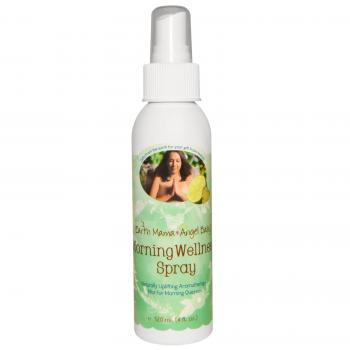
“I think Earth Mama Angel Baby’s Morning Wellness aromatherapy spray is designed primarily to help pregnant women with morning sickness, but it does much more. It smells awesome and can be a great way to replace perfumes or air fresheners. I especially liked that its uplifting scent gave me a boost when I was sleep-deprived.” —Christy Schwengel, Major Gifts Officer
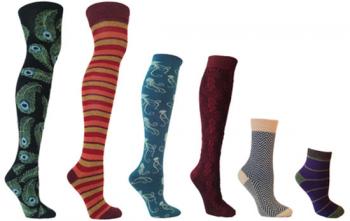
“Snuggly socks from RocknSocks offer real warmth, bright colors, and a variety of lengths for kids and teens. All of their stylish socks are made in the USA from recycled cotton and certified Oeko-Tex 100 (see p. 65).” —Fran Teplitz, Executive Co-Director

“Want a fun, creative board game that doesn’t leave the child who lost feeling blue? Try a cooperative board game like The Secret Door, sold by Bella Luna Toys. Cooperative games are just as fun as Monopoly or Life, but a lot less cutthroat since all of the players work together to solve a common problem. (Maybe we should send copies to our members of Congress!)” —Rob Hanson, Membership Marketing Manager
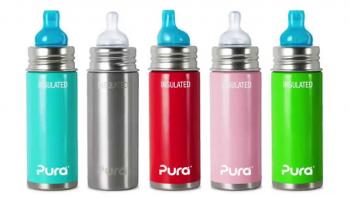
“Pura Stainless bottles are great because they are completely plastic-free, easy to clean, and you can use the same bottle from infancy to adult. The lids are interchangeable so your bottle can go from a baby bottle to a sports bottle in a few twists.” —Kristin Brower, Development Manager
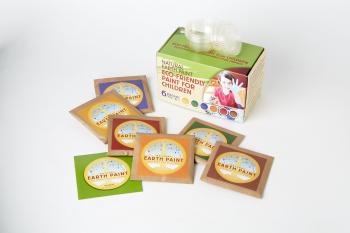
“Eco-friendly paint kits from Natural Earth Paints, LLC are handcrafted, all-natural and vegan, and free of toxic chemicals. They come in individual powder packets, so half of the fun is mixing up the paint itself. ” —Tracy Fernandez Rysavy, Editor-in-Chief
Top image: Lullaby Earth Breeze Breathable 2-Stage Crib Mattress
|
|
Prestige Green Touch Cleaners |
We Clean Green...
Organic ...Non -Toxic - Odorless...Non- Hazardous material...Not a hazardous substance according to CLP...Favorable classification according to GHS Biodegradable...
Prestige Green Touch Cleaners is your Environmentally Safe, Eco-Friendly Full Service Dry Cleaners. We have state-of-the-art Dry Cleaning & Laundry technology for all fabric care. Some of the fabrics we clean include suede, leather & fur. Our other services include Re-dying & alterations. A long history of being a reputable dry cleaner, Building relationships with our customers by giving them the attention that they deserve. Quality and customer service is always the number one priorities. Our ability to remove difficult stains, our high-quality alterations, and repairs, we also feature a convenient pickup & delivery service. We use the most advanced cleaning methods and the best soaps and detergents in both our Dry Cleaning Wet Cleaning & Laundry processes to bring new “life” into your wardrobe. No other cleaners can offer you the service and quality that Prestige Green Touch Cleaners can offer.
We can clean anything from formal wear to wedding gowns.
|
|
Not All Those Fancy Labels on Your Groceries Are Created Equal. A New Resource Identifies the Good and the Bad Apples |
Washington, D.C.—November 9, 2017— With Thanksgiving and the holiday season around the corner, Green America released a valuable guide for consumers navigating the cornucopia of vague and often confusing food labels. “The ABCs of Food Labeling” is a guide to help consumers understand which labels certify food that was produced with adherence to a set of verifiable criteria, and which labels are just cheap marketing ploys. As it turns out, many of the labels and certifications mean a lot less than you think!
The new guide covers labels for animal welfare, environmental and health concerns, labor conditions, and the presence of Genetically Modified Organisms (GMOs). The guide rates each label with one through five stars, and evaluates impacts on environment and human health, whether the label represents a clearly defined legal or regulatory standard and whether the standards set forth by the label are subjected to third-party certification or audit.
“Purchasing foods with meaningful labels is a critical way to support socially and environmentally responsible food production,” said Anna Meyer, the food campaigns director at Green America. “Autumn is a season of great eating and great cooking! Keep a printed copy of the ABCs of Food Labeling with your reusable grocery bags or access the list from your phone.”
The guide also offers helpful tips and interesting facts, including:
- Organic is always Non-GMO: When a food is labeled USDA organic, that means it cannot be produced using genetic engineering (GE) or ingredients derived from GE crops. Shop carefully when buying corn, soy alfalfa, sugar, canola, cotton, papaya, zucchini, and summer squash, as well as animal products, which most often come from animals that have been fed GE crops.
- Want humane food? Meet the humans producing it: One of the best ways to know what animal stewardship practices were involved in producing your food is to meet your farmer! Buying meat, dairy, and eggs at your local farmer’s market, or through a CSA, allows you to have a conversation with the farmers that produce your food. Ask them questions about humane practices and support local, ethical farms.
- Shop smart: Access other resources while you’re at the store. Animal Welfare Alliance has an app that exposes whether animal product labels are trustworthy. Label Lookup and Non-GMO Project Shopping Guide are apps that serve a similar function for packaged goods. The app Locavore helps you find farmers markets and locally produced food near you.
“The ABCs of Food Labeling” is available for free download at https://www.greenamerica.org/abcs-food-labels.
ABOUT GREEN AMERICA
Green America is the nation’s leading green economy organization. Founded in 1982, Green America provides the economic strategies, organizing power and practical tools for businesses and individuals to solve today’s social and environmental problems. http://www.GreenAmerica.org
MEDIA CONTACT: Max Karlin for Green America, (703) 276-3255, or mkarlin@hastingsgroup.com.
|
|
Director of Strategy and Development, Center for Sustainability Solutions |
Foundations & Major Gifts Manager, Center for Sustainability Solutions
Hours: 32 hours/week, flexible 4-work week (full time)
Salary: $56,000 - 66,000, contingent on experience
Benefits: Excellent benefits package, including health insurance, dental & vision coverage, sick days, holidays, and vacation
Supervisor: Director, Center for Sustainability Solutions
Deadline: January 31, 2018
Organizational Background
Green America is a national non-profit organization that mobilizes consumers, investors, and businesses to use their economic power to create an environmentally sustainable and socially just economy. We create change in the world with three strategic hubs: 1) Our Consumer Education & Action campaigns create consumer demand that sends signals to the market calling for change, 2) Our Green Business Network is proving that green innovation is not only good for people and our planet, it is also profitable and sustainable, and 3) Our Center for Sustainability Solutions brings together diverse stakeholders along entire supply chains to solve complex sustainability problems that no single business, organization, or leader can solve alone.
We organize our national network of 250,000+ consumer activists, 2,000 Green Business Network members, and our growing list of corporate and supply chain partners around four core issue areas: 1) Safe Food & Sustainable Agriculture, 2) Clean Energy & Climate Action, 3) Fair Labor & Social Justice, and 4) Responsible Finance & Better Banking.
The Center for Sustainability Solutions at Green America supports several “Innovation Networks” – focused groups of stakeholders with the objective of making significant, industry-wide system change. The program team of the Center for Sustainability Solutions provides strategic direction, stakeholder engagement, facilitation, and program management for participating individuals and companies in each Innovation Network. Our current networks are focused on sustainable agriculture (non-GMO and Carbon Farming supply chains) and Clean Electronics (removing toxic substances harmful to people and planet from supply chains).
Seeking a Foundations & Major Gifts Manager for the Center for Sustainability Solutions
We seek an experienced Foundations & Major Gifts Manager who can hit the ground running to play a major role in raising new major donor, foundation, and government grant support for Green America’s Center for Sustainability Solutions. This includes cultivation of new major donor prospects; researching and identifying possible foundation support, writing letters of inquiry and full proposals for foundation grant applications, exploring government grant opportunities, and the launching of a new initiative – the Thought Leader Network. We expect the Foundations & Major Gifts Manager to manage a portfolio of 20-30 major donors, build the major donor pipeline with increased and new gifts, oversee the Center’s foundation fundraising, and effectively coordinate with Green America’s President & CEO, the Center Director, and the Director of Development.
The position may involve frequent domestic travel (5-8 times per year; up to 15-20% of time). The position would be based in Washington, DC at the Green America offices.
Duties and Responsibilities
Design and Implementation of an effective development strategy. Create and execute a comprehensive plan to expand our base of support and achieve fundraising targets for the Center for Sustainability Solutions. Proactively identify and pursue foundations, relevant government grants, and prospective major funders with potential to support the Center and/or specific programs and initiatives in our sustainable agriculture, clean electronics, and other working groups as they develop. Expand the breadth and depth of major donor and foundation support, and continually grow the funding pipeline across time.
Coordinate with Innovation Networks within the Center to identify intersection of funder priorities and key program areas. Support Center team to identify new programs/initiatives based on the existing and emerging priority areas of foundations and existing/prospective major funders. Liaise with funders and program staff to provide insight and resources for Center program development strategy.
Take leading role in launch of Thought Leader Network. Help develop strategy and recruit members who will play both an advisory and funding role for the Center. Support Center Director and team with launch of this “President’s Council-like” network to grow the Center and Green America.
Play a direct, lead role in forging productive long-term relationships – yielding significant sustained support – with existing and prospective major donors and foundation executives and government agencies. Achieve fundraising targets for major donors, foundations and government funders. Build relationships based on credibility, trust, and knowledge/understanding of prospective supporters’ values and priorities and how they align with Green America’s mission.
Effectively articulate Green America’s mission, objectives, programs, and impacts. Participate in creating compelling, effective fundraising messages and collateral. Effectively convey the organization’s mission, objectives, programs, impacts and asks in one-on-one conversations and with larger groups. Play a significant role in helping to increase Green America’s profile as a green thought/action leader within funding networks.
Work with the President & CEO, Center Director, Development Director, and others in Green America’s fundraising efforts. Proactively identify when it will be effective to strategically involve leadership staff in fundraising efforts, and manage/coordinate their targeted participation. Track, manage and pursue leads, prospects and follow-ups passed on by others in the organization.
Skills/Experience
- Bachelor’s degree and at least 4-6 years of proven high-level major gift fundraising experience.
- Fundraising experience in the sustainable food/agricultural sector highly preferred.
- Demonstrated experience working with government grant and/or foundations, including conducting research, meeting with program officers, producing successful letters of inquiry, proposals and reports.
- Demonstrated relationship building experience and solicitation of major gifts ($10,000+).
- Strong experience with fundraising management tool Raiser’s Edge and Zoho CRM
- Demonstrated ability to utilize technology and donor databases to manage fundraising efforts, track actions, and build funder relationships.
- Donor research skills and the ability to effectively identify, segment, and prioritize prospective major donors and foundations.
- Proven ability to effectively work in coordination with other team leaders.
- Strong project management and organizational skills with ability to meet tight deadlines.
- Exemplary communications skills, interpersonal skills, professionalism, and ability to build long-term relationships with key stakeholders.
- Excellent written skills with demonstrated ability to craft compelling, effective messaging and collateral for fundraising purposes.
- Strong intrinsic interest in issues directly related to Green America’s mission.
- Ability to obtain a deep understanding of Green America’s main program areas (Safe Food & Sustainable Agriculture, Clean Energy & Climate Action, Fair Labor & Social Justice, and Responsible Finance & Better Banking), and communicate this understanding to donors.
- Sustainable Agriculture and Food experience and strong relationships in this field a plus.
- Certified Fundraising Executive (CFRE) certification (or working toward certification) also a plus.
How to Apply:
Send cover letter and resume to Center for Sustainability Solutions, Green America, 1612 K Street NW, Suite 600, Washington, DC 20006, or email centerjobs@greenamerica.org.
No calls, please.
Green America is an equal opportunity employer.
|
|
Food Campaigns Specialist |
|
|
Conspire Design + Photography LLC |
Conspire Design + Photography empowers using modern methods in Feng Shui and Portraiture serving the Denver Metro Area and beyond. The Conspire Design Method™ teaches you how to design a living space that aligns with your dreams and goals. With the premise that your external environment supports your internal thoughts we work with natures elements and a whole health consciousness using concepts from yoga, modern feng shui, and psychology to make a plan for living your best. Conspire Design provides consults, workshops and speaking events accredited by the Western School of Feng Shui Speakers Guild and the International Feng Shui Guild. Consider a new mantra of whole health in MIND BODY SPIRIT + SPACE as an investment that lasts much longer than the current trends. Portraiture providing green options in the print process and digital goods. Entrepreneurial lifestyle and headshots for your professional website, artistic portraits in natural surroundings near you for engagements, seniors, and family rituals and celebrations. Contact us today to conspire!
|
|
10 Grinch Gifts To Avoid This Holiday |
Jewelry from Discount and Department Stores
Problems: Adult and children costume jewelry from stores such as Claire’s, Walmart, Target, Forever 21, Walmart, H&M, and Icing may contain toxic lead and cadmium. Mining for stones and metals used in more expensive jewelry causes environmental damage, unsafe working conditions, and violent and lethal conflict.
Better Options: High-quality jewelry made by fair trade artisans.
Box of Un-certified Chocolates

Problems: Cacao can come from forced child labor and underpaid farmers and workers. Chocolates most likely contain sugar and soy lecithin that are genetically engineered (GMOs), and may contain unhealthy artificial flavors.
Better Options: Fair trade and organic chocolates
Non-Organic Body Care Gift Sets
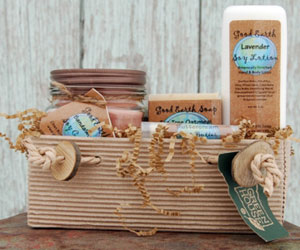
Problems: Soaps, lotions, etc. contain parabens, phthalates preservatives, and synthetic fragrances, which cause endocrine and hormone disruption, thyroid problems, infertility, and cancer.
Better Options: Products with only nontoxic, safe ingredients.
Toy Guns
.jpg)
Problems: Made of plastic which comes from petroleum and toxic chemicals, often made in sweatshops overseas, and send a violent message to children.
Better Options: Peaceful toys, made in the USA from nontoxic and sustainable materials.
Barbie Dolls
.jpeg)
Problems: Made of plastic which comes from petroleum, made by low-wage workers overseas, and affects young girls and their body image.
Better Options: Positive-image dolls; Fair trade and/or made in the USA out of non-toxic, sustainable materials.
Gift Cards to Big-Box and “Fast Fashion” Stores
.jpg)
Photo by Ken Wolter.
Problems: Many products from stores like Walmart, Target, and H&M are made with unsustainable materials, plastic (from petroleum), and toxic chemicals; produced in sweatshops and dangerous working conditions. Big-box retailers also pay some of the lowest staff wages.
Better Options: Fair trade, sustainable, unique gifts.
Conventional Candles

Problems: Often made from paraffin wax which is a petroleum by-product and produces soot when burned, genetically engineered (GMO) soy, wicks with lead, and toxic synthetic fragrances.
Better Options: Beeswax and non-GMO soy candles with essential oils for fragrance.
Scarves, Mittens, Hats from Department and Discount Stores
.jpg)
Problems: Many mainstream stores such as Gap and Target use sweatshop labor and unsustainable fibers.
Better Options: Sustainable, fair trade businesses and products that are handmade and/or from reclaimed materials.
Virgin-Paper Journals and Cards

Problems: Virgin forests are destroyed to make paper, affecting watersheds, air quality, animal habitat, and climate change.
Better Options: Made from 100 percent recycled paper or non-tree paper. Even better is non-tree paper that provides a sustainable income and protects animals.
Athletic Gear/Yoga Mat from Chain Stores
.jpg)
Problems: Made of synthetic and potentially unhealthy materials, under bad working conditions.
Better Options: Sustainable, fair trade businesses and products.
|
|
Social Equity Group |
Coming soon.
|
|
SFMG Wealth Advisors |
Coming soon.
|
|
RJ Devick |
Coming soon.
|
|
Empowered Investments |
Coming soon.
|
|
Food Popup Image |
|
|
Editors' Picks: Green Gifts for the Holidays |
This gift guide includes our favorite green gift products, and the companies behind them are committed to environmental and humanitarian missions. Skip the crowds at the store, and shop green for everyone on your list.
For the Fashionable:

Fair trade jewelry from Coco Loco is crafted with the purpose of sustaining both culture and environment. The design of these handmade Burmese Hoops ($35) are influenced by the Hindi culture of the artisans who made it.
For the Outdoorsy Person:

This Cannabis Cottage Bird House ($69.95) from Gardener’s Supply is made with an outdoor water-based non-toxic paint and adds a fun home for some flying visitors!
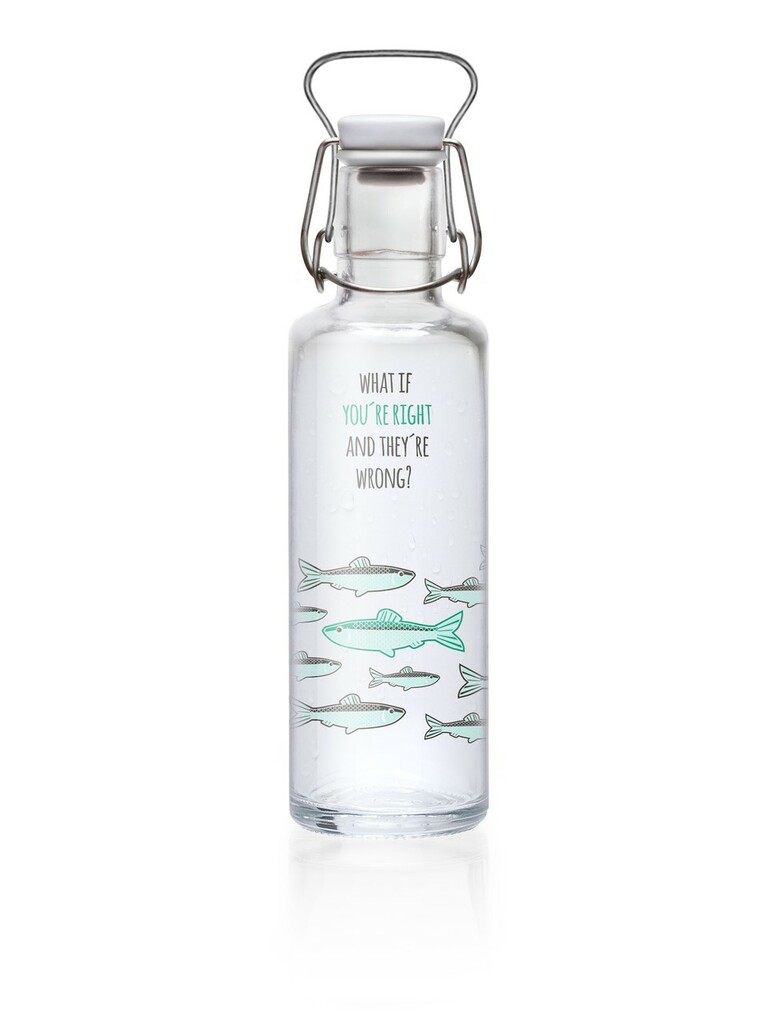
Encourage your loved ones to be themselves, stay hydrated, and avoid single-use water bottles! The Glass plastic-free soulbottle 0.6 L ($26) from Life Without Plastic is made of Venetian glass and sports a funky, easy-to-use swing-top cap made of ceramic, stainless steel and natural rubber. Paul Berndt designed this bottle, which encourages a be-yourself motto.

Gardener Supply’s Solar Bottle Lantern Kit ($14.95) provides an easy way to upcycle any glass bottle you wish into a beautiful night-time yard or garden accent that can be used year-round. The kit includes a steel hanger, a rubber stopper with a small solar panel, and a battery with a string of LED lights attached.
For the Homebody:
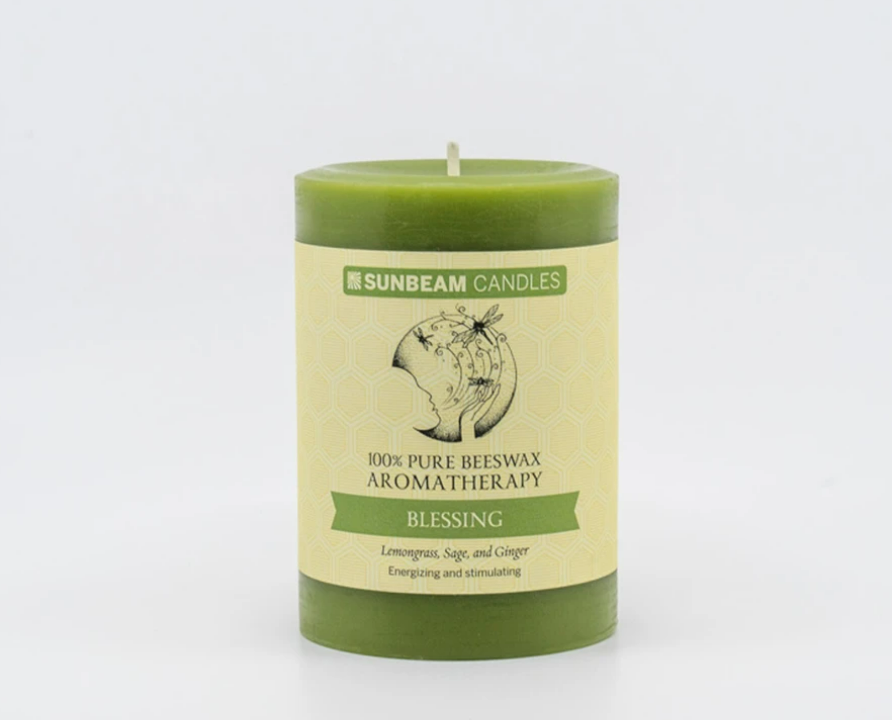
Each of Sunbeam Candles’ Manifestations Aromatherapy Pillars ($28.99) comes in a deep color and a unique scent, courtesy of eco-friendly dyes and natural essential oil blends. Made to “celebrate the people and occasions in our lives,” the candles come in Meditation, Healing, Immunity, Goddess, Candle for Peace, Transformation, Gratitude, Blessing Candle, Birthday Candle, and Queen Bee. All Sunbeam candles are made in a 100-percent solar-powered studio, from pure beeswax and GMO-free soy wax with cotton wicks.

EcoChoices’ Grape Seed Crush Body Scrub ($14.75) is a true aromatic experience of crushed grape seeds from the wine country. The natural oils from the seeds will hydrate your skin for a unique experience and smooth, polished look.
Need a personalized gift for a lot of people? ECO Promotional Products’ bamboo items (range of prices). Dozens of options including utensils, awards, pens, and more. Long-lasting bamboo is naturally anti-fungal and anti-bacterial.
For the Pets:

This Snuggle Sleeping Bag for Cats (prices range from $31.95 to $59.95 depending on size) from Purrfect Play (2016 People & Planet Finalist) comes in several sizes and is made with soft dye free natural white organic cotton.

If it’s a pet plaything you’re after, try the company’s organic cotton or recycled wool Jingle Snakes for cat (cloth snakes with bells hidden inside, $11.95-$18.95) or organic cotton Tug Toys ($12.95-$18.95) for dogs.
About Our People & Planet Award
Green America’s People & Planet Award recognizes businesses for their dedication to a green economy. Seasonally, we award three $5,000 cash prizes in a range of green business categories, such as zero waste, worker empowerment, and sustainable food. The public nominates businesses for recognition.
|
|
Human Labels |
|
|
Environmental Concerns Labels |
Back to the Food Labels Guide
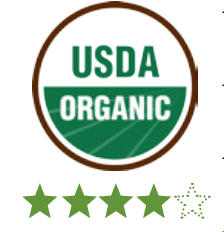
100% USDA Organic
- USDA National Organic Program (NOP) sets regulations and labeling requirements.
- Verification guaranteed by annual unannounced or announced inspections, investigations of complaints, and enforcement penalties.
- 100% organic labeled products must contain only organically produced ingredients and processing aids not including water and salt.
- Organic ingredients are grown, handled, and processed without the use of pesticides or other synthetic chemicals and fertilizers.
- Bioengineering is not permitted, so that means no GE (genetically engineered) ingredients
- The USDA organic certification does allow for monoculture crop production.
- The organic certification does not represent the highest standard in animal welfare. In order to ensure high animal welfare it is best to purchase products where USDA organic is accompanied by a credible third-party animal welfare certification.
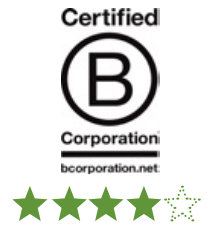
B Corp Certification
- The B Corp certification is a third-party certification verified by B Lab, a non-profit organization.
- B Corp ensures its members have high standards for environmental and social responsibility.
- B Corp companies must commit to take steps to improve the treatment of their employees, their community, and the environment.
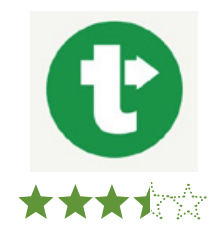
Certified Transitional Organic
- Independently verified by QAI (Quality Assurance International) through step-by-step benchmarks and inspections.
- This certification helps farmers transition from conventional to organic practices by creating a better market for their products while they are transitioning, allowing them to pay for the cost of going organic.
- Farms have three years under the label to become USDA certified organic, with each year having specific benchmarks farms must meet along the way.
- This will create more organic acreage by giving farmers the financial security to transition to better practices.
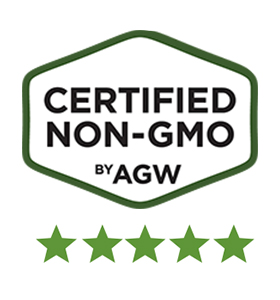
Certified Non-GMO by AGW
- Certified Non-GMO is a standard from the organization A Greener World (AGW), who is also behind the Animal Welfare Approved standard.
- This standard can not stand alone and can only be applied in addition to the Animal Welfare Approved standard.
- The Certified Non-GMO standard applies to livestock feed and inputs; ensuring a product is non-GMO throughout the entire supply chain.
- AGW requires regular testing.
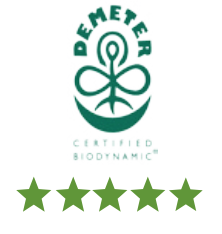
Demeter Certified Biodynamic
- This is a certification given by Demeter Association Inc. that requires farmers to apply and then pass inspections.
- Farmers must follow biodynamic principles, meaning the soil, plants, animals, and humans must work together as a holistic organism.
- On-farm recycling of nutrients and composting must be demonstrated. Farms must have minimal dependence on outside sources for synthetic fertilizers and pest control.
- Conscientious water conservation and the setting aside of land for biodiversity are practiced.
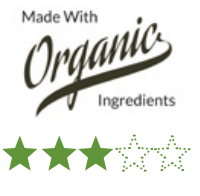
Made With Organic Ingredients
- USDA National Organic Program (NOP) sets regulations and labeling requirements.
- Verification guaranteed by annual unannounced or announced inspections, investigations of complaints, and enforcement penalties.
- Includes products that contain at least 70% organic ingredients.
- Remaining 30% of ingredients must be from USDA approved list
- Organic ingredients are grown, handled, and processed without the use of pesticides or other synthetic chemicals and fertilizers.
- Bioengineering is not permitted, that means no GE (genetically engineered) ingredients. The standard allows for monoculture crop production.
- The organic certification does not represent the highest standard in animal welfare. In order to ensure high animal welfare it is best to purchase products where USDA organic is accompanied by a credible third-party animal welfare certification.
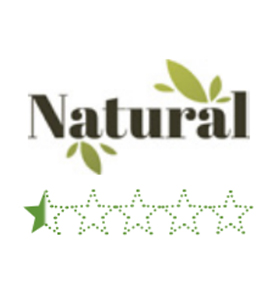
Natural
- The USDA states that products should not contain artificial ingredients or added colors and must be minimally processed. Manufacturers should define their use of the term on the package.
- Beyond the definition above (which is only applicable to meat products and is not verified) there is no set standard or enforcement mechanism.
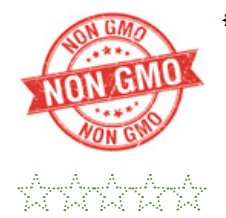
Non-GMO (Unverified)
- Beware of non-GMO claims that are unverified. If a label has any GMO claims that are not verified by the USDA or a third-party verification the claim is not backed by any standard.
- It is best to look for a third-party verification, as the USDA does not include animal feed in its non-GMO requirements; meaning that an animal product can be considered non-GMO even if the animal was fed GMOs. The only way to ensure a product is non-GMO throughout its entire supply chain is through a third-party verification.

Non-GMO Project Verified
- Trustworthy third-party verified certification that guarantees products do not contain genetically engineered ingredients above a set threshold.
- GMO contamination must be below .25% for seeds, .9% for food and skin products, 1.5% for cleaning products and textiles, and 5% for animal feed and supplements.
- Compliance is ensured through analytical testing and corrective actions.
Organic is Non-GMO
REMEMBER: When a food is labeled USDA organic that means it cannot be produced using genetic engineering (GE) or use ingredients derived from GE crops. Shop carefully when buying corn, soy alfalfa, sugar, canola, cotton, papaya, zucchini, and summer squash, as well as animal products, which most often come from animals that have been fed GE crops. Unless organic, these items are most likely derived from genetic engineering. Organic certification goes beyond non-gmo certification to address other key components of sustainable agriculture. However, organic does not require testing for the presence of GMOs. In order to ensure that there is not GE material in your food, you should purchase products that are organic and have a third-party non-GMO certification.
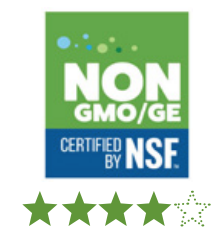
NSF Non-GMO True North
- Standards enforced by National Science Foundation (NSF) through unannounced audits.
- Products verified by NSF Non-GMO True North contain less than .9% GE contents or less than 5% for feed.
- Regulates feed for livestock, ensuring feed from GE crops is not used through an animal's lifecycle.
- Compliance is ensured through analytical testing and corrective accounts.
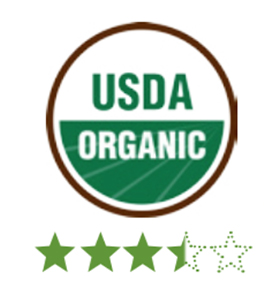
Organic
- USDA National Organic Program (NOP) sets regulations and labeling requirements.
- Verification guaranteed by annual announced or unannounced inspections, investigations of complaints, and enforcing penalties.
- Must contain at least 95% ingredients produced organically excluding water and salt. Remaining 5% if ingredients myst be from a USDA approved list.
- Organic ingredients are grown, handled and processed without the use of pesticides or other synthetic chemicals and fertilizers.
- Bioengineering is not permitted, product does not contain any GE ingredients.The organic certification does allow for monoculture crop production.
- The organic certification does not represent the highest standard in animal welfare. In order to ensure high animal welfare it is best to purchase products where USDA organic is accompanied by a credible third-party animal welfare certification.
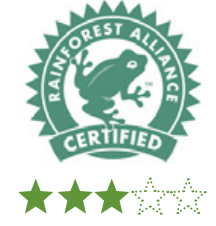
Rainforest Alliance Certified/UTZ
- Sustainable Agriculture Network (SAN) sets criteria for products to be certified.
- This certification emphasizes the yield of farmers and has no guaranteed price paid to farmers.
- Prohibits child labor and has an environmental component that addresses biodiversity, natural resources conservation, and sustainable agriculture.
- Allows multi-ingredient products to be certified without making it clear what percentage of ingredients are certified. Look for single ingredient products with this label, such as coffee beans.
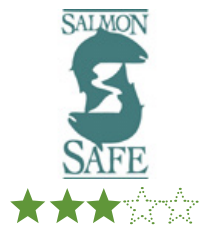
Salmon Safe
- The Salmon Safe label is put on products that are produced in a way that minimizes pollution in rivers and wetlands to protect native salmon.
- This includes limiting pesticides, improving irrigation practices, and planting trees by rivers.
- These products are verified by a third-party.
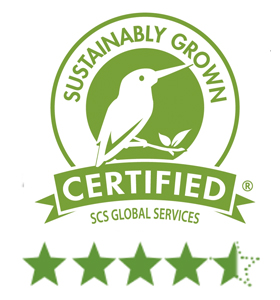
Sustainably Grown Certified
- Certified by SCS Global Services, a third-party organization that provides environmental and sustainability verification, certification, auditing, testing, and standards development.
- This certification addresses a broad range of environmental, social, and economic sustainability issues pertaining to crop production. (Note: this standard does not address animal husbandry or welfare).
- Specific environmental protection issues addressed include production system parameters, soil and water resources, air quality, climate change, ecosystem protection, energy efficiency, and waste management.
- Social responsibility requirements cover work agreements, wages and benefits, working hours, child labor, non-discrimination and freedom of association, human resource management, health and safety, and community relations.
- Economic sustainability issues addressed include business accounting and reporting, continuity and resilience, community economic engagement, and product quality and safety.
How we rated the labels
1. First, we considered whether the label evaluates a practice that could lead to measurable benefits. For example, organic labels are certifying practices that prohibit the use of synthetic chemicals and therefore seek to reduce impacts on the environment and human health. This leads to measurable benefits. By contrast, “farm fresh” is meaningless since it does not define practices that create any measurable benefits.
2. We then looked at whether the label represents a legal or regulatory standard that is clearly defined. For example, the USDA organic standards are clearly defined by the USDA, and those standards are publicly available. By contrast, the words “naturally raised” are not regulated, and are meaningless.
3. We then considered whether the standards set forth by the label are subjected to third-party certification or audit. The use of an outside certifier and/or auditor helps to prevent greenwashing that can easily occur with self-regulated labeling.
Labels that received the highest marks from Green America (4 to 5 stars) are those that scored the highest on the criteria above.
|
|
sustainable something or other |
|
|
Envio Labels 3 |
|
|
Envio Labels 2 |
|
|
Enivo Labels 1 |
|
|
Food Labels for Animal Welfare |
Whether you're buying milk, eggs, or meat, animal welfare is an important consideration when grocery shopping. Food labels and certifications are the key for deciphering ethically made products.
Back to the Food Labels Guide
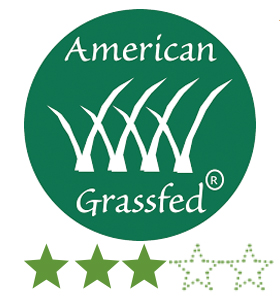
American Grassfed Approved
- American Grass Fed Association establishes standards, compliance is ensured by FSIS (Food Safety and Inspection Services) of the USDA.
- Animals are fed a 100-percent forage diet and are never confined to feed lots.
- Animals are never fed antibiotics or hormones and are born and raised on American family farms.
- Third-party audits assure compliance.
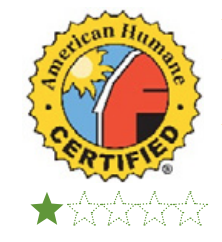
American Humane Certified
- Certification given by Humane Heartland after an application and audit.
- Does not require pasture time for animals, permits cages, and allows beak-cutting.
- Concerns have been raised regarding audits and and failure to put limits on the distance live farm animals can be transported (a traumatic experience for animals).
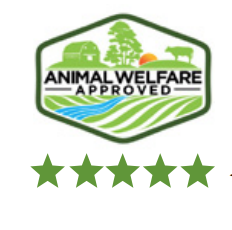
Certified Animal Welfare Approved by AGW
- A Greener World (AGW) audits, certifies, and supports farmers.
- AGW is a non-profit organization and does not charge farmers for AWA certification.
- Animals have continuous access to pasture or range and are not put in feedlots.
- Cage confinement, horomones, and preventative or growth-promoting antibiotics are prohibited.
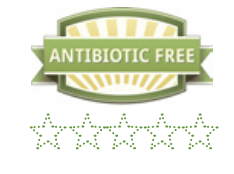
Antibiotic-Free
- Use of this claims is not backed by any standard.
- This claim can be verified through the USDA Process Verified program. The USDA Process Verified program is a verification of paperwork and does not require an audit.
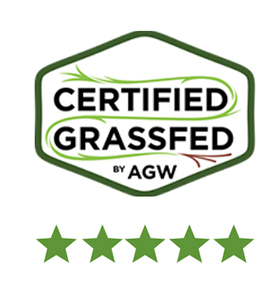
Certified Grassfed by AGW
- Certified Grassfed is a standard from A Greener World (AGW), a nonprofit organizatoim, that also developed the Animal Welfare Approved standard.
- This standard can not stand alone and can only be applied in addition to the Animal Welfare Approved standard.
- The standard is 100% grass/forage based and compliance to the standard is monitored through audits.
- AGW encourages sustainable pasture management with attention to plant biodiversity.
- The grassfed standard and allowed exceptions to the standard are set to ensure the highlest level of animal welfare.
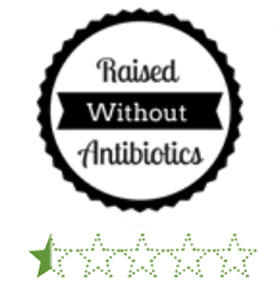
Raised Without Antibiotics/No Antibiotics Administered/Added
- The USDA grants these labels if it receives documentation that animals were not given antibiotics during their lives.
- This label does not require a physical audit or third-party assessment and is granted solely from a signed affidavit.
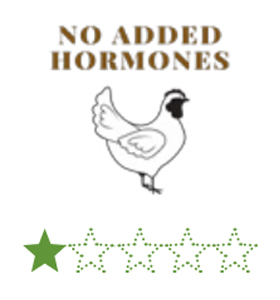
Cage-Free
- Cage-free labels do not require any third-party certification.
- Cages are prohibited but animals are not required to have access to sunlight, animals can be tightly crowded with movement restricted.
- Allows beak-cutting and starvation-based forced molting.
- Does not regulate feed or antibiotic use.
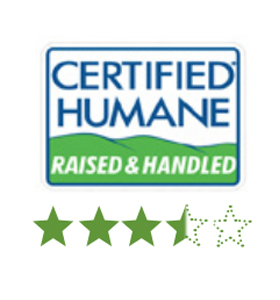
Certified Humane Raised and Handled
- Humane Farm Animal Care (HFAC) is a non-profit organization that verifies this certification.
- Continuous outdoor access required for ruminants (cattle, goats, and sheep).
- Outdoor access not required for birds and pigs unless the words “free range” or “pasture”’ also appear on the package.
- If indoors, adequate bedding, space, and enrichment are provided for birds and pigs.
- Cage confinement, hormones, and non-therapeutic antibiotics are prohibited.
- Feed lots with standards better than conventional feed lots are allowed for limited periods of time.
Humanely Local
One of the best ways to know what animal stewardship practices were involved in producing your food is to meet your farmer! Buying meat, dairy, and eggs at your local farmer’s market, or through a CSA (community supported agriculture), allows you to have a conversation with the farmers that produce your food. You can ask them questions about humane practices and support local, ethical farms.
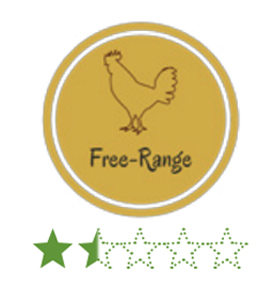
Free-Range/Free-Roaming (USDA)
- The term free-range is not regulated by the USDA except when applied to chickens and turkeys raised for meat.
- It must be verified that animals have “access to the outdoors” but the quality of this access is not specified so it could be a very small space for a very short time; conditions of farms with this label vary greatly
- Does not regulate feed.
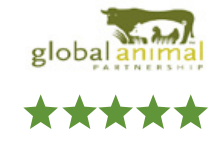
Global Animal Partnership (GAP)
- The Global Animal Partnership (GAP) has a 5+-step rating program for animals raised for meat (this does not include milk).
- The higher the step (1 is the lowest, 5+ is the highest), the stricter the requirements for animal welfare and the more natural the animals’ environment. The steps build on each other encompassing the standards of the steps preceding them.
- It is important to note that the 5-star rating is for GAP Step 6.
- Added Hormones and antibiotics are prohibited at all steps.
- Standards are comprehensive including breeding stock (placement for poultry) through to slaughter for all animals except beef (coming later this year), and laying hens (coming next version)
- GAP requires audits on single every farm every 15 months to ensure compliance – no group, or sampling protocols permitted.
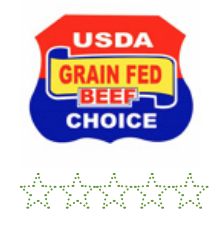
Grain-Fed
- Feeding ruminants grain instead of vegetation causes severe digestive problems and increases the likelihood of infection, contributing to the increased used of antibiotics.
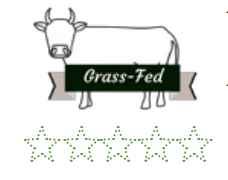
Grass-Fed
- The USDA grass-fed label has been withdrawn and farms applying to the program will no longer be verified.
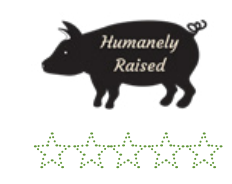
Humanley Raised/Humanely Handled
- The USDA does not define or regulate these terms.
- Check for third-party verified labels listed above and below for meaningful animal welfare claims.
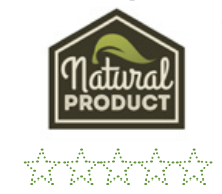
Naturally Raised
- The USDA does not define or regulate this term.
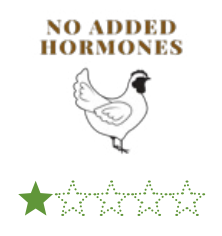
No Hormones Added/No Hormones Administered (USDA)
- This label is certified by the USDA. It should be noted that administration of hormones is illegal for pork and poultry, so the claim is meaningless on those products.
- Producers must prove no hormones were administered during the animal’s life.
- No relevance to any other aspects of animal welfare.
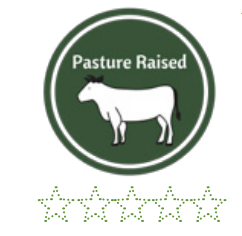
Pasture Raised/Pasture-Grown/Pastured
- There are no legal definitions for these terms, companies can put this label on their products without third-party verification.
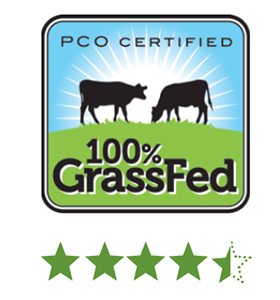
Pennsylvania Certified Organic 100% Grassfed
- This certification uses the USDA organic standard as its baseline and ensures that ruminants are 100% grassfed, above and beyond the USDA organic standard for time on pasture.
- This is a third-party verification of products that are sourced from animals raised on pasture.

Validus Animal Welfare Certified
- Certifications hold accreditations from ISO 9001:2005, PAACO, USDA PVP and USDA ISO TS 34700 Animal Welfare Assessment Programs.
- Standards are owned and administered by Validus, an independent certification company, but governed by external expert advisory committees.
- Certification affirms that an operation has met the published Validus animal welfare standards with yearly on-site audits of each location to ensure compliance
- Certification does not address hormone-use, antibiotic-use, feed type, or access to the outdoors.
How we rated the labels
1. First, we considered whether the label evaluates a practice that could lead to measurable benefits. For example, organic labels are certifying practices that prohibit the use of synthetic chemicals and therefore seek to reduce impacts on the environment and human health. This leads to measurable benefits. By contrast, “farm fresh” is meaningless since it does not define practices that create any measurable benefits.
2. We then looked at whether the label represents a legal or regulatory standard that is clearly defined. For example, the USDA organic standards are clearly defined by the USDA, and those standards are publicly available. By contrast, the words “naturally raised” are not regulated, and are meaningless.
3. We then considered whether the standards set forth by the label are subjected to third-party certification or audit. The use of an outside certifier and/or auditor helps to prevent greenwashing that can easily occur with self-regulated labeling.
Labels that received the highest marks from Green America (4 to 5 stars) are those that scored the highest on the criteria above.
|
|
Animal Labels 4 |
|
|
Animal Labels 3 |
|
|
ANtibiot Free |
|
|
Animal Welfare Labels 2 |
|
|
Animal Welfare Labels 1 |
|
|
American Grassfed |
|
|
Green America Financial Report 2017 |
|